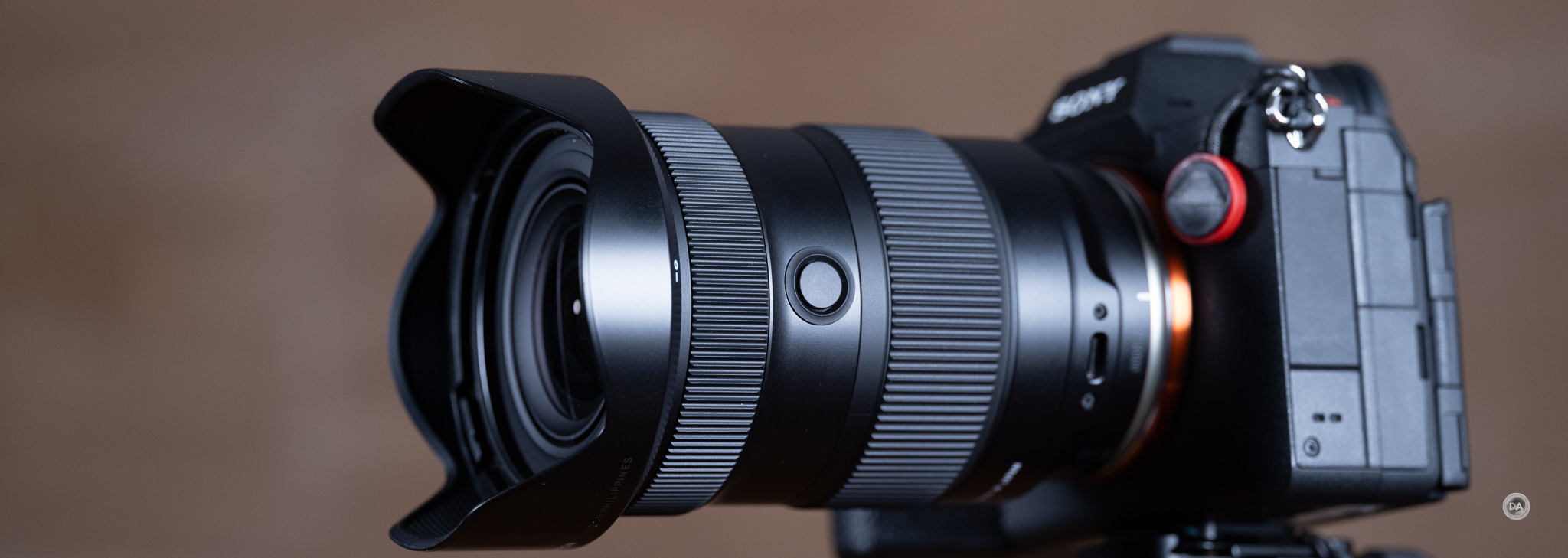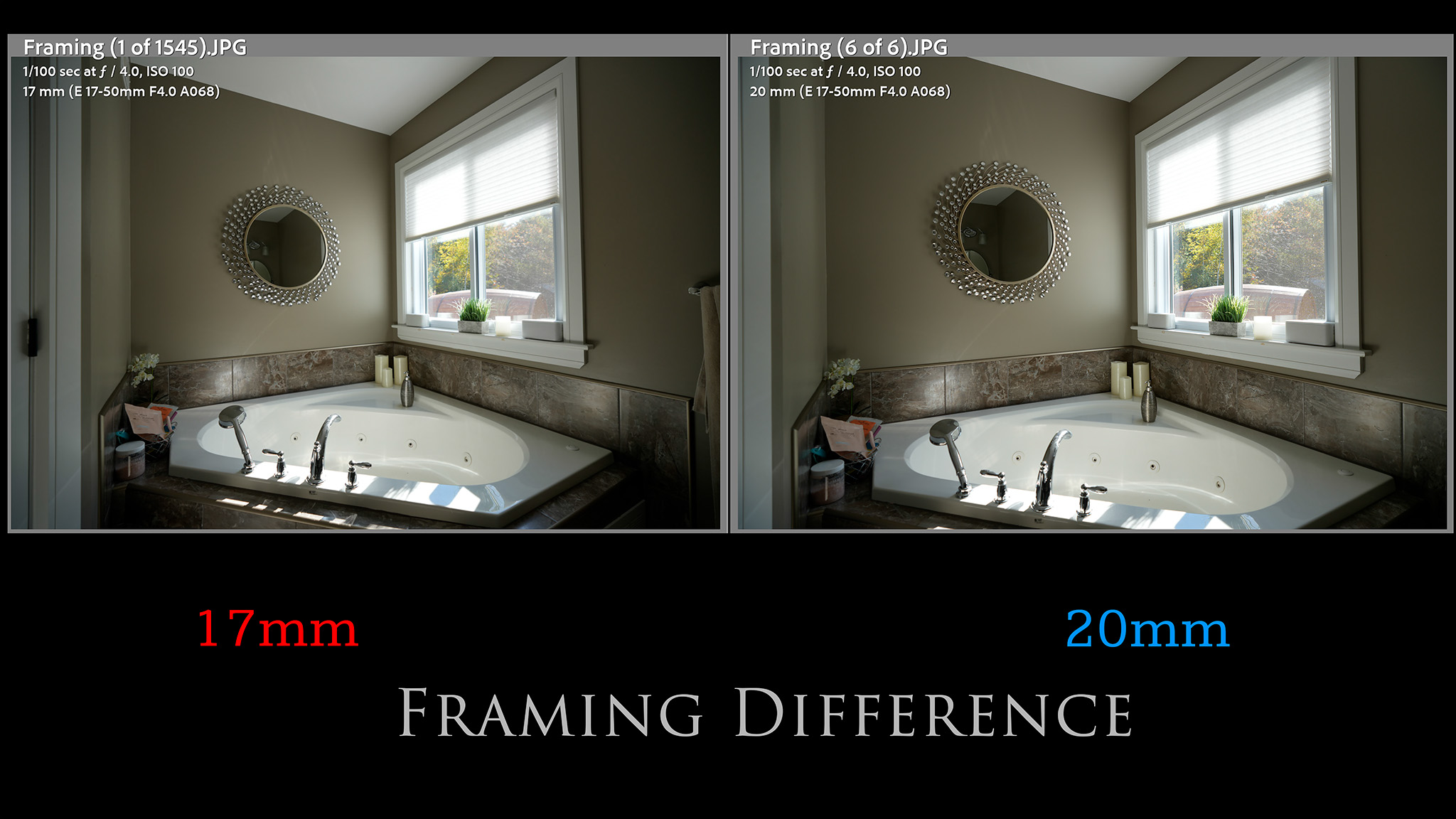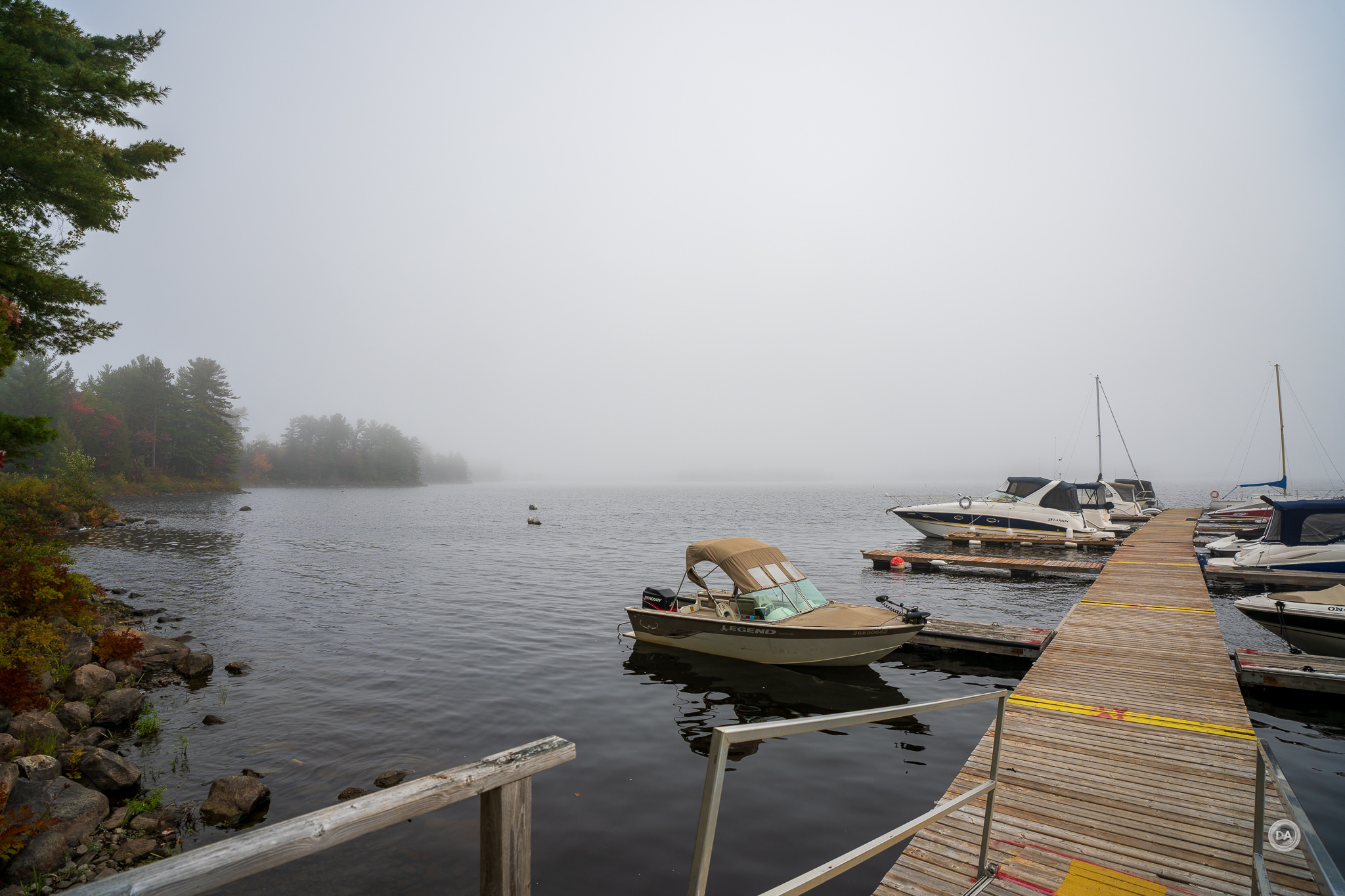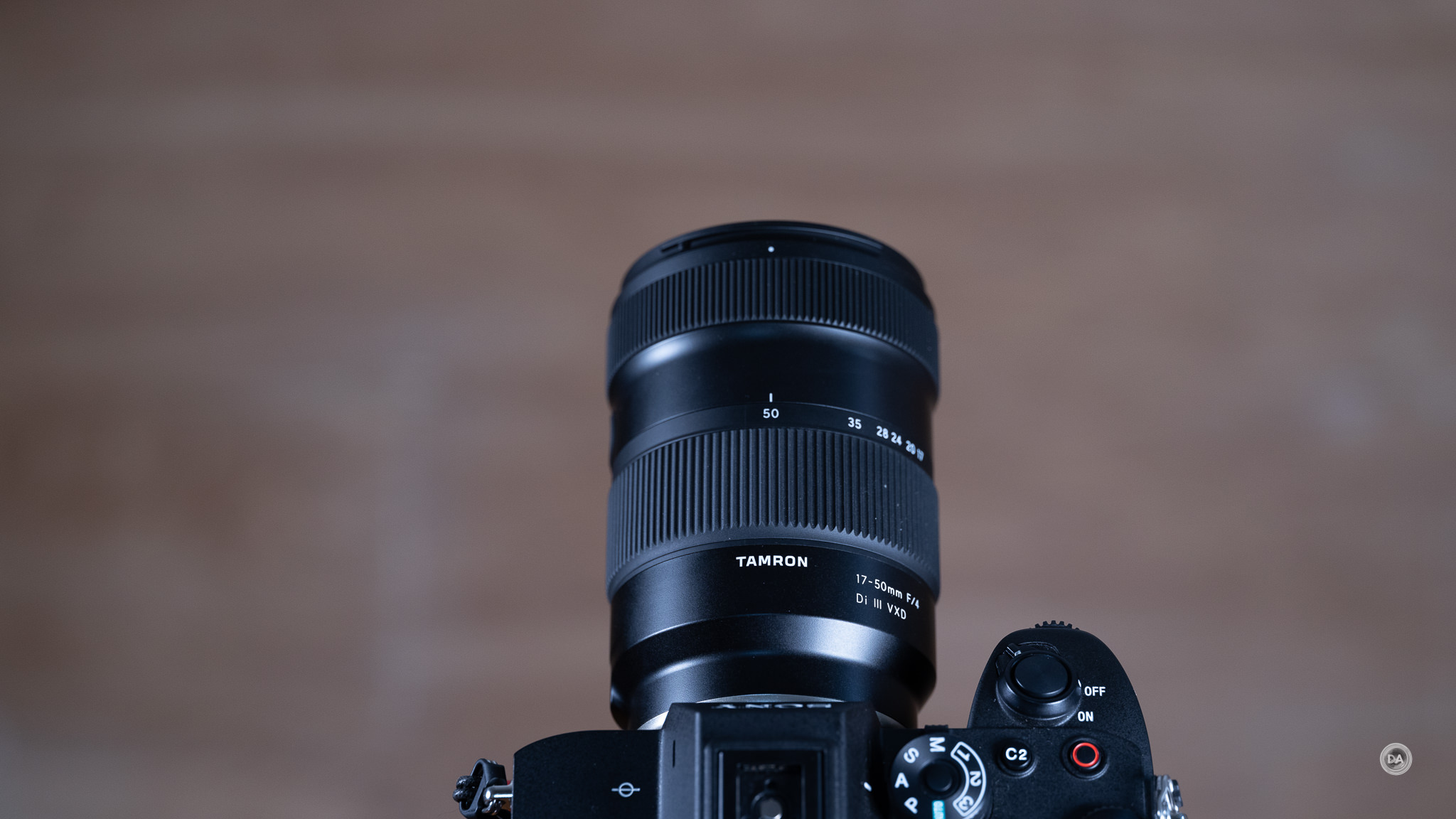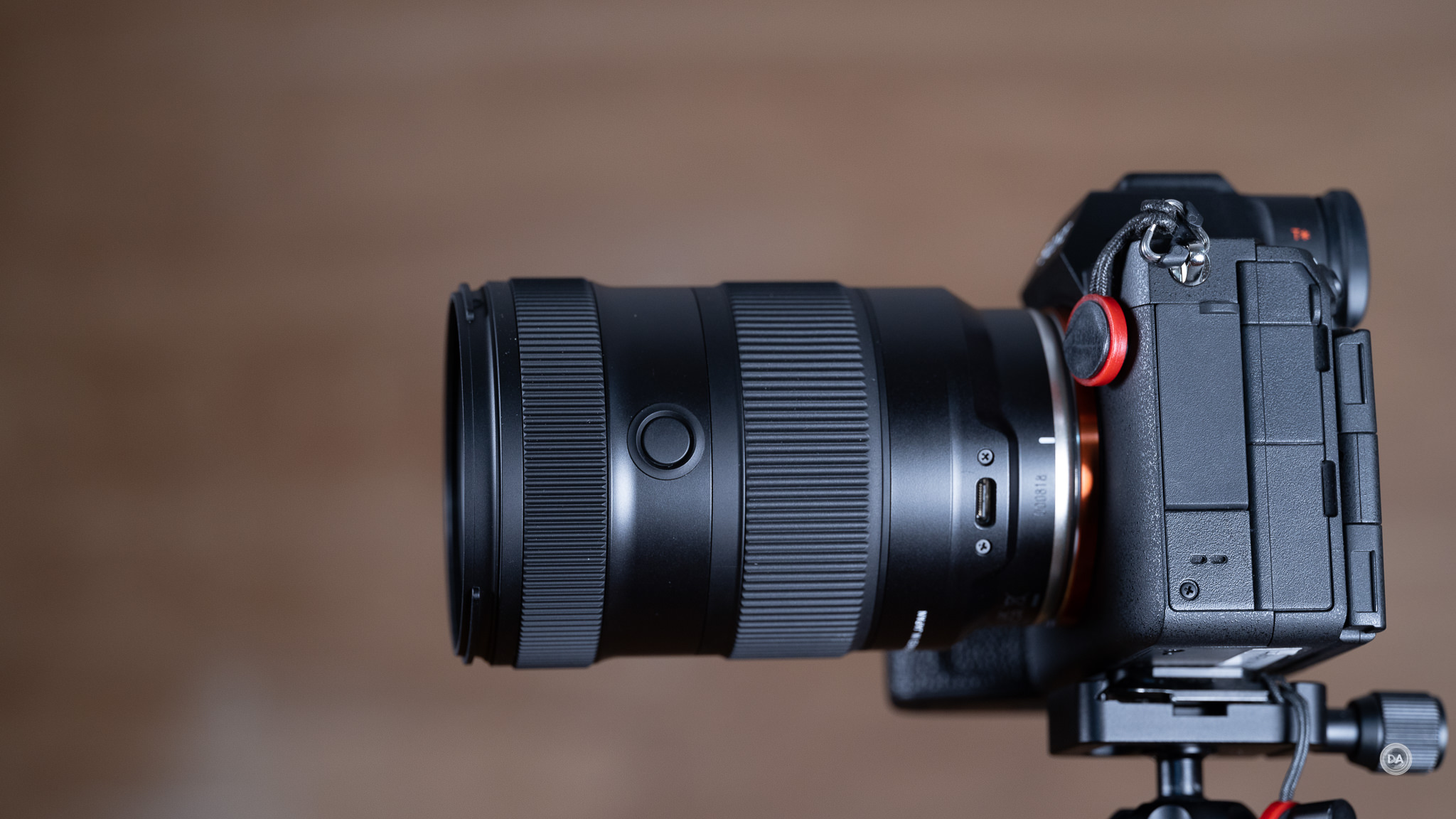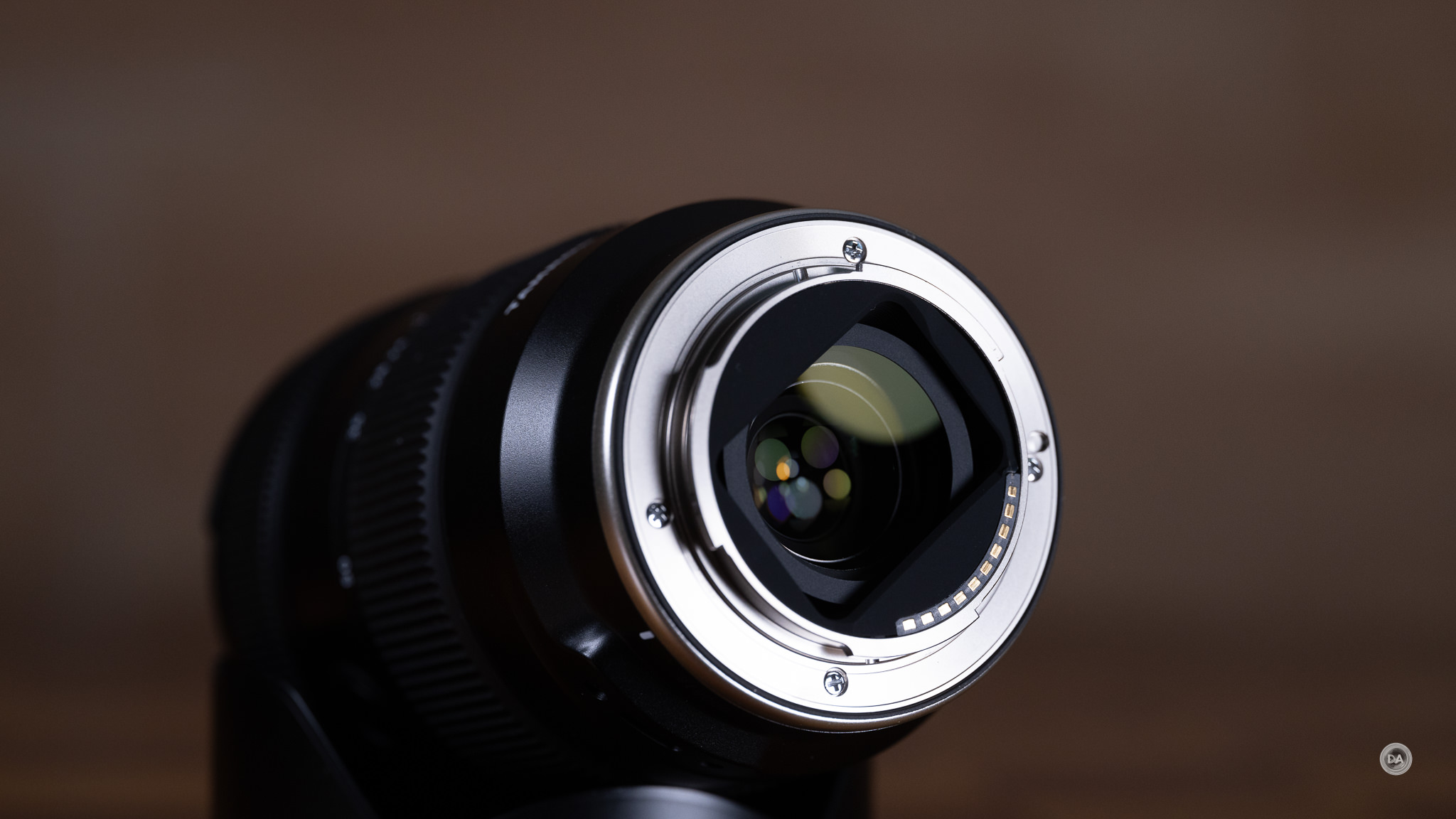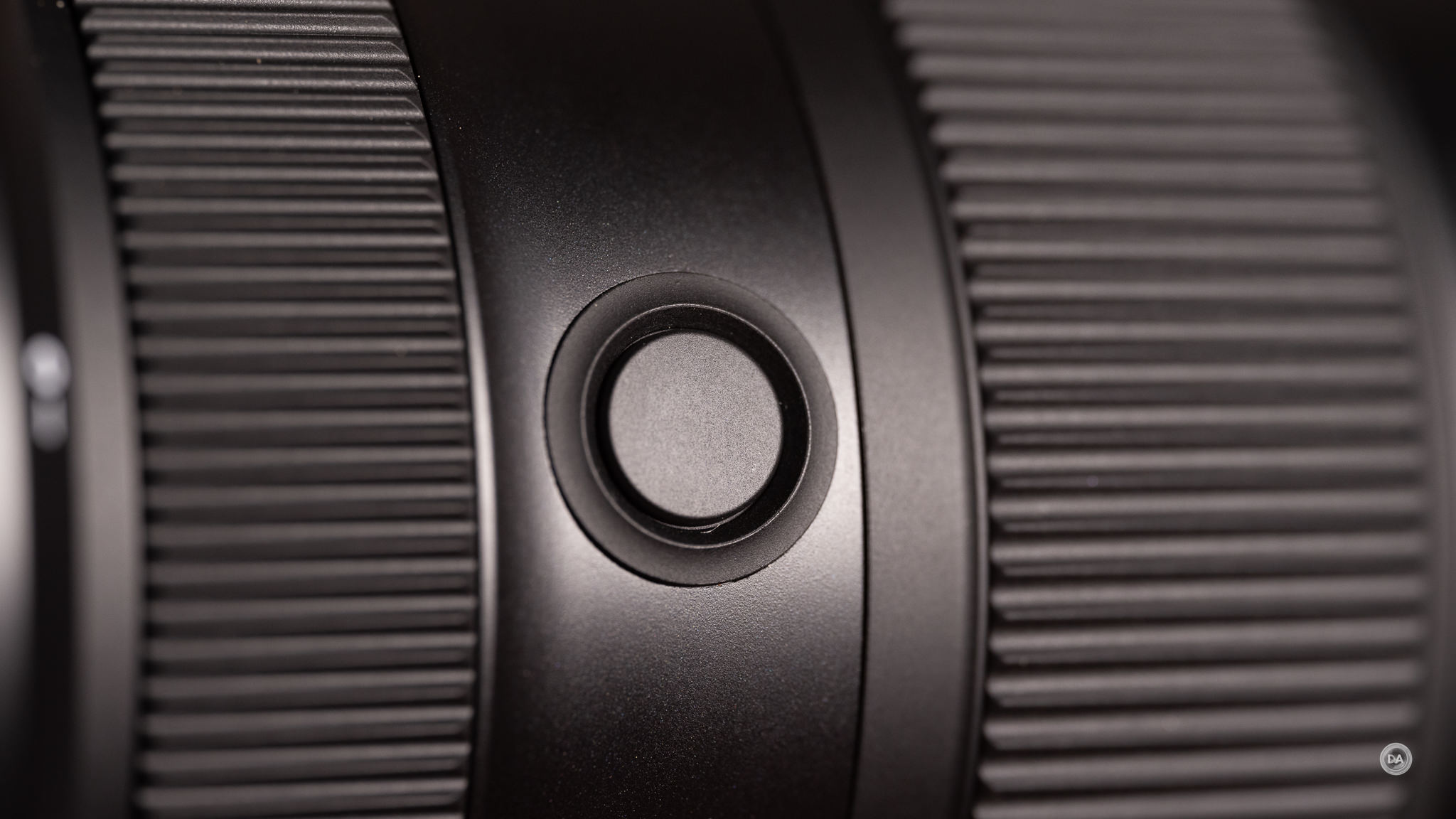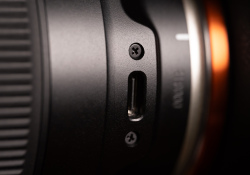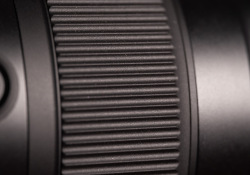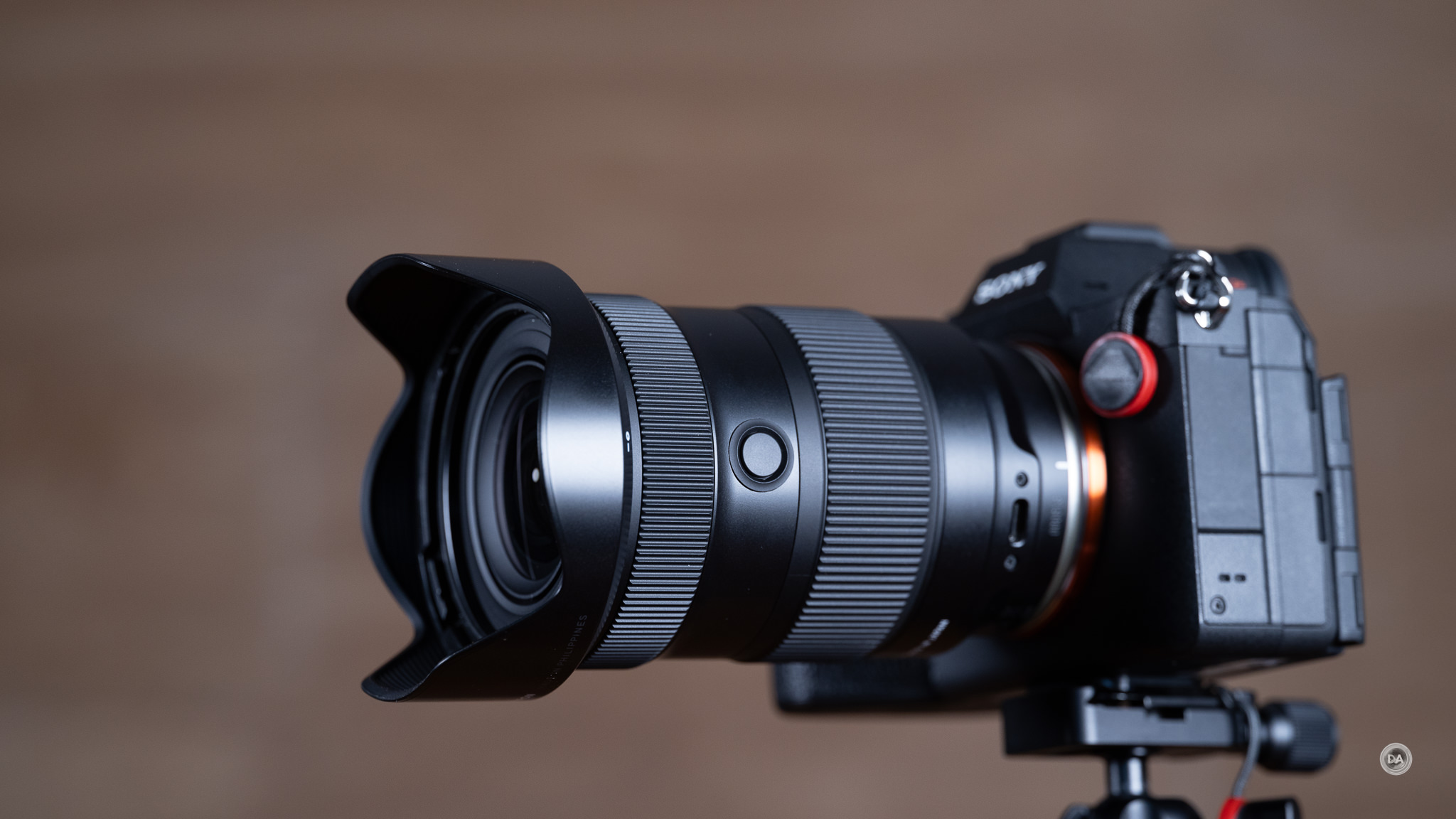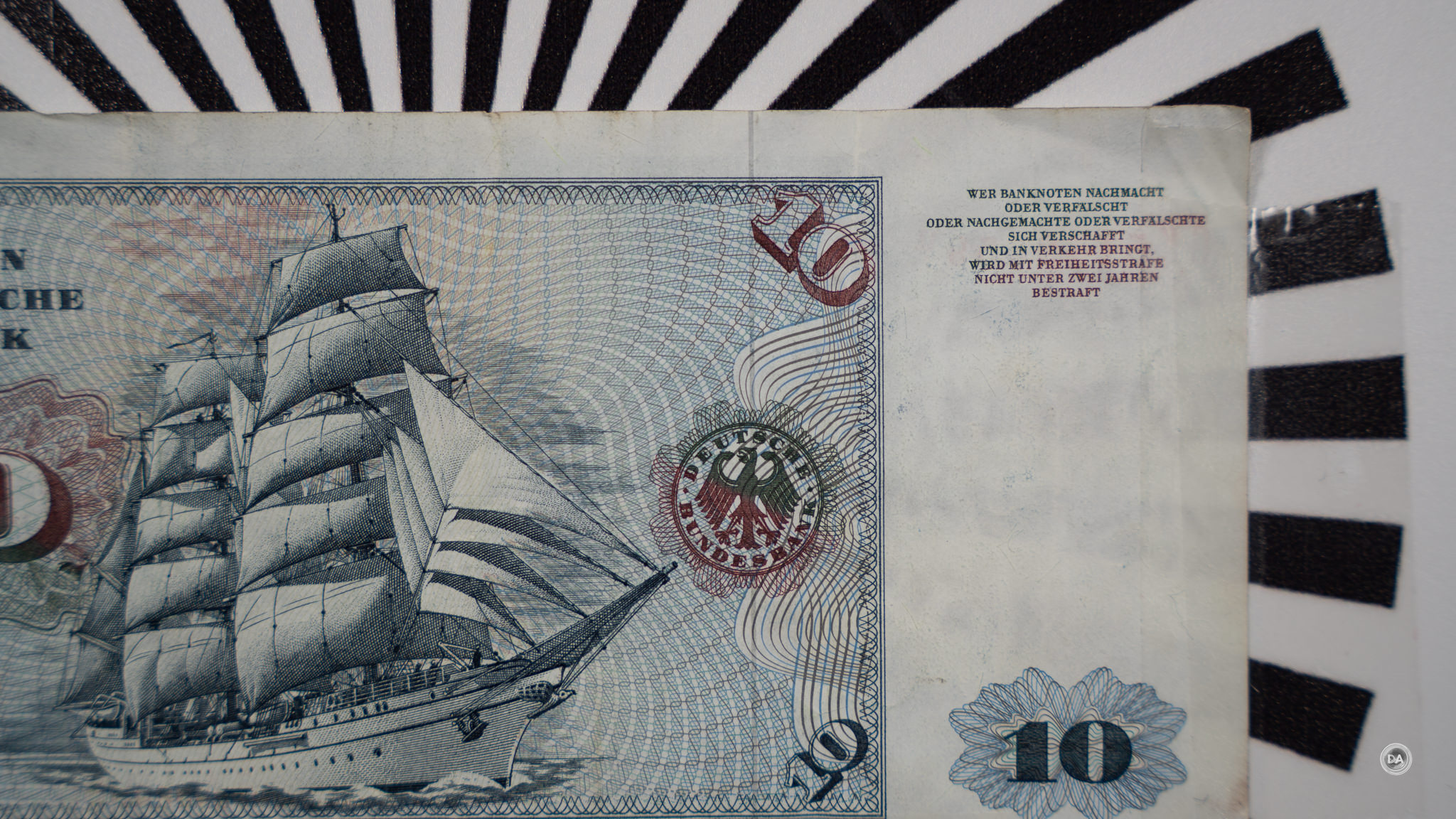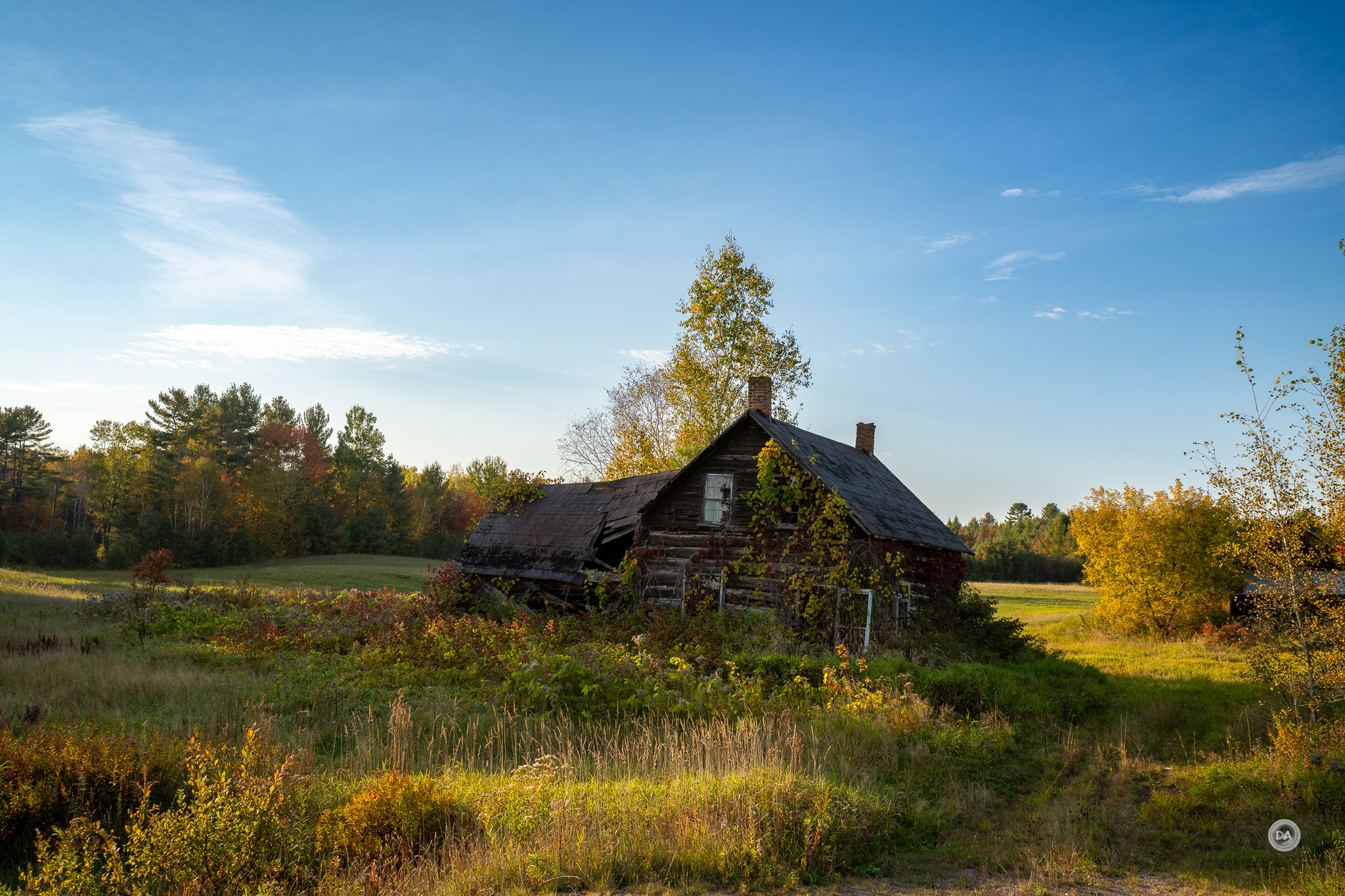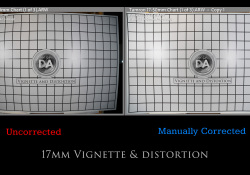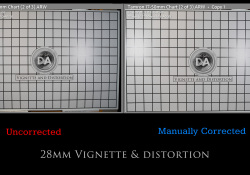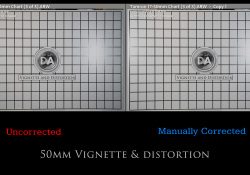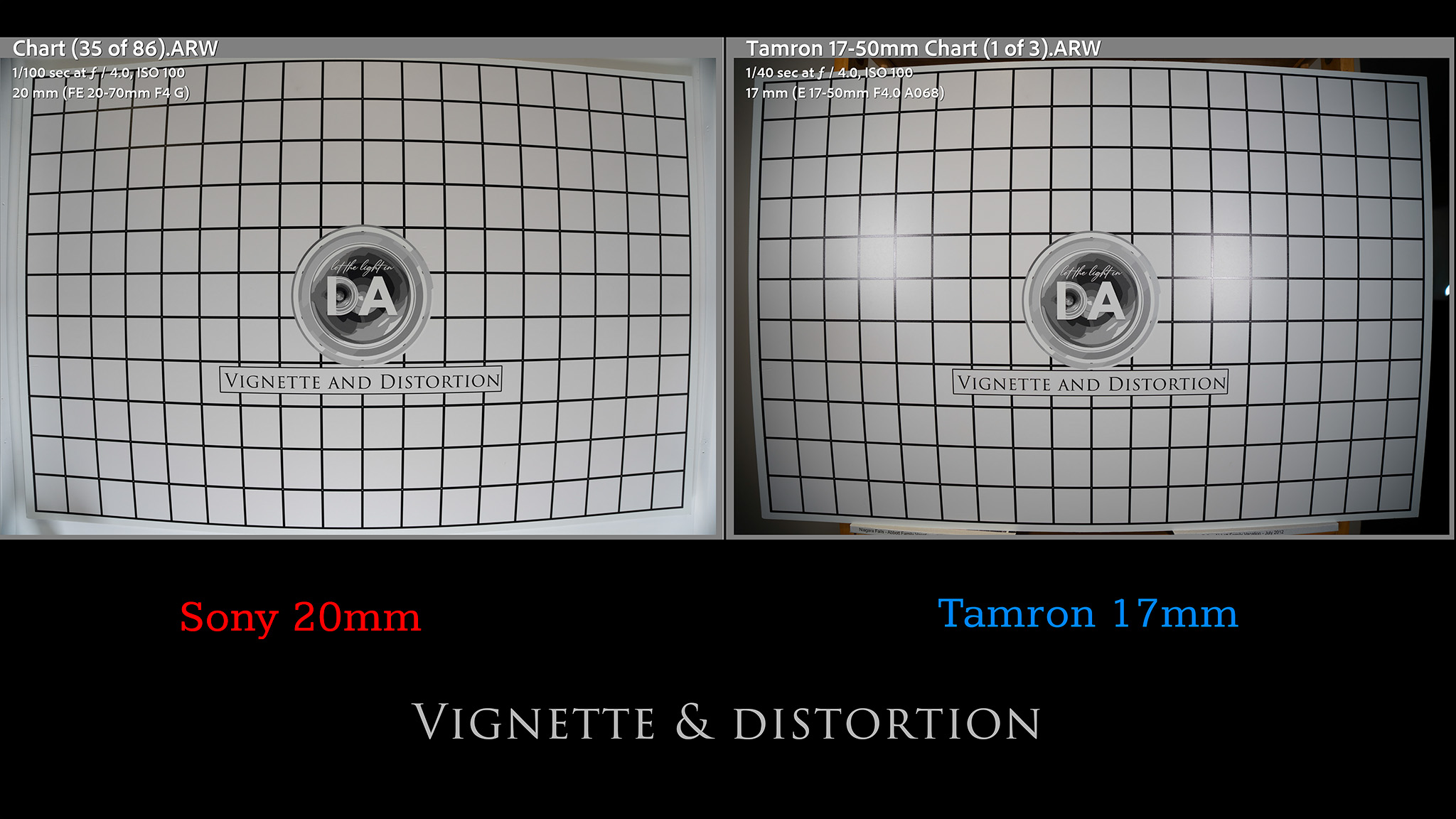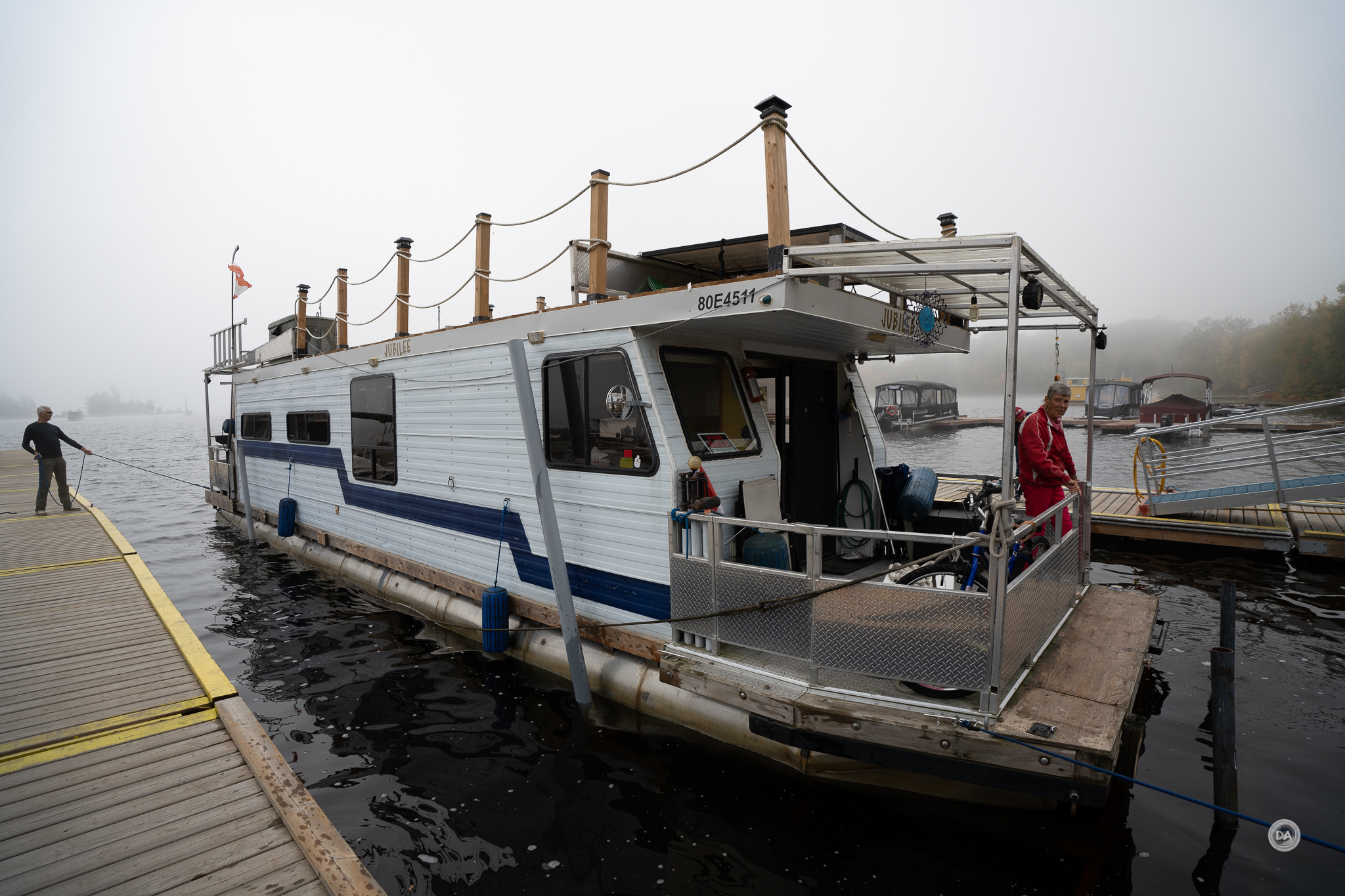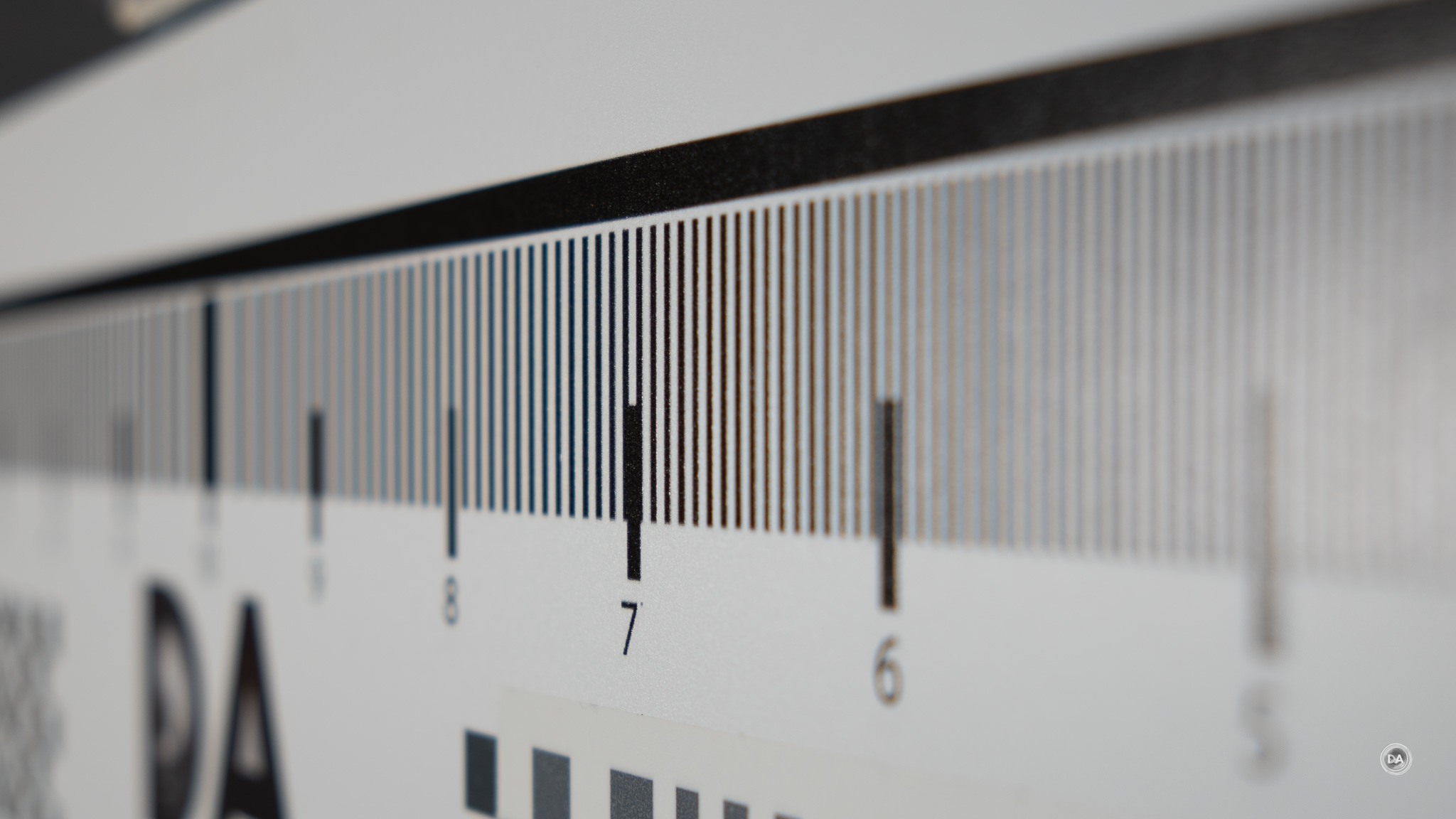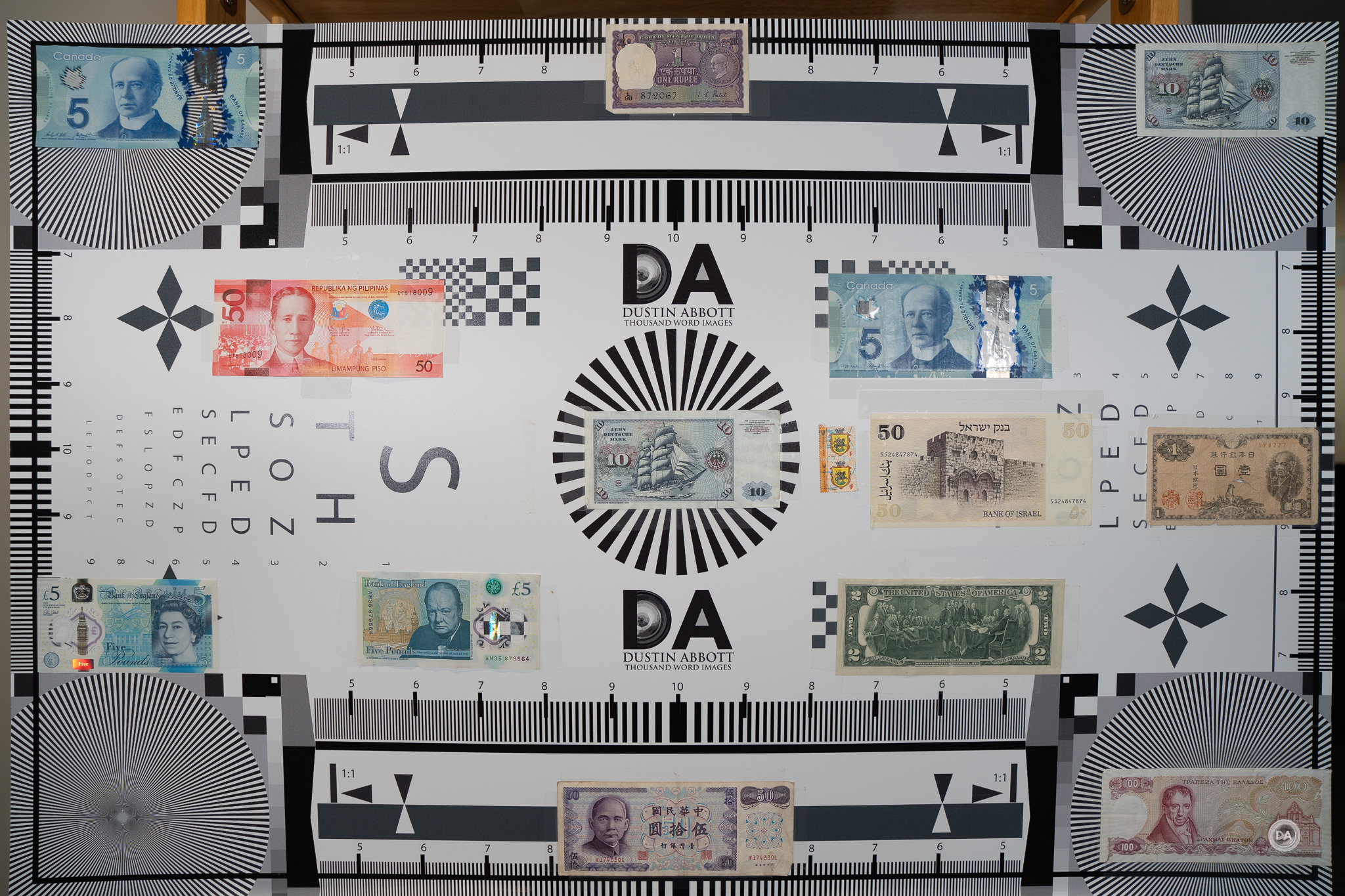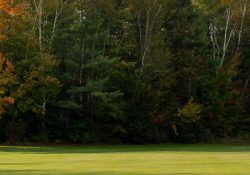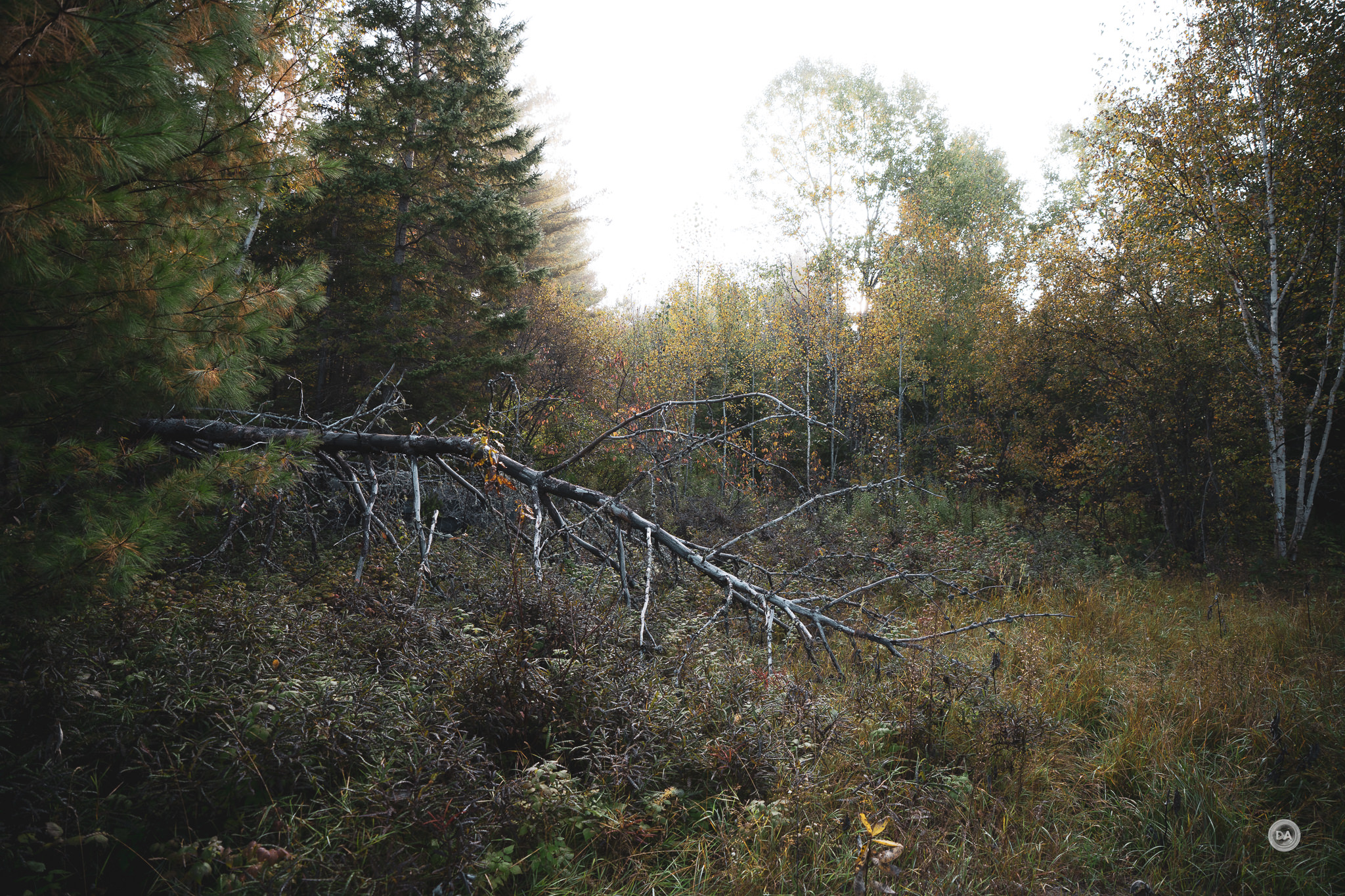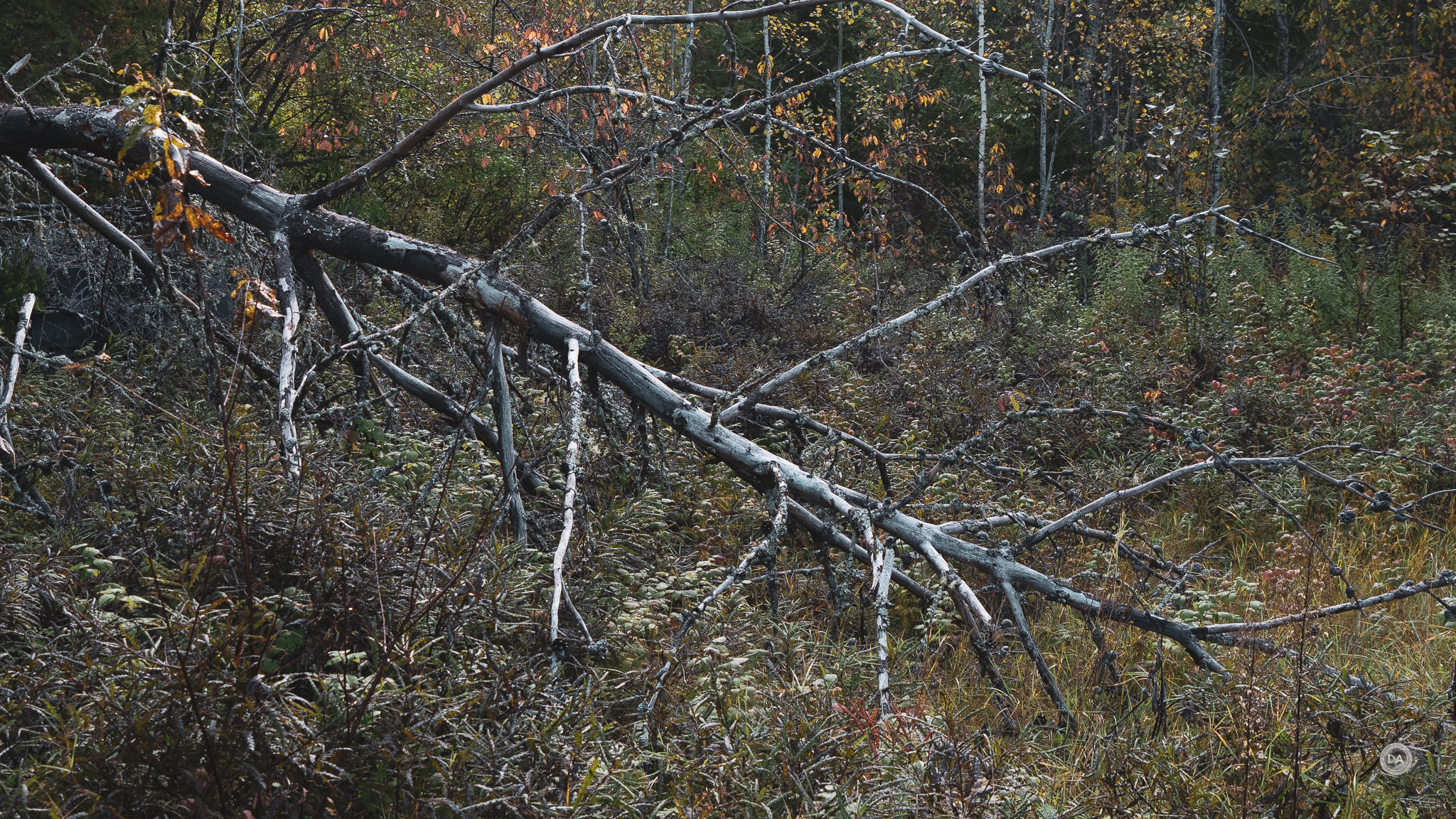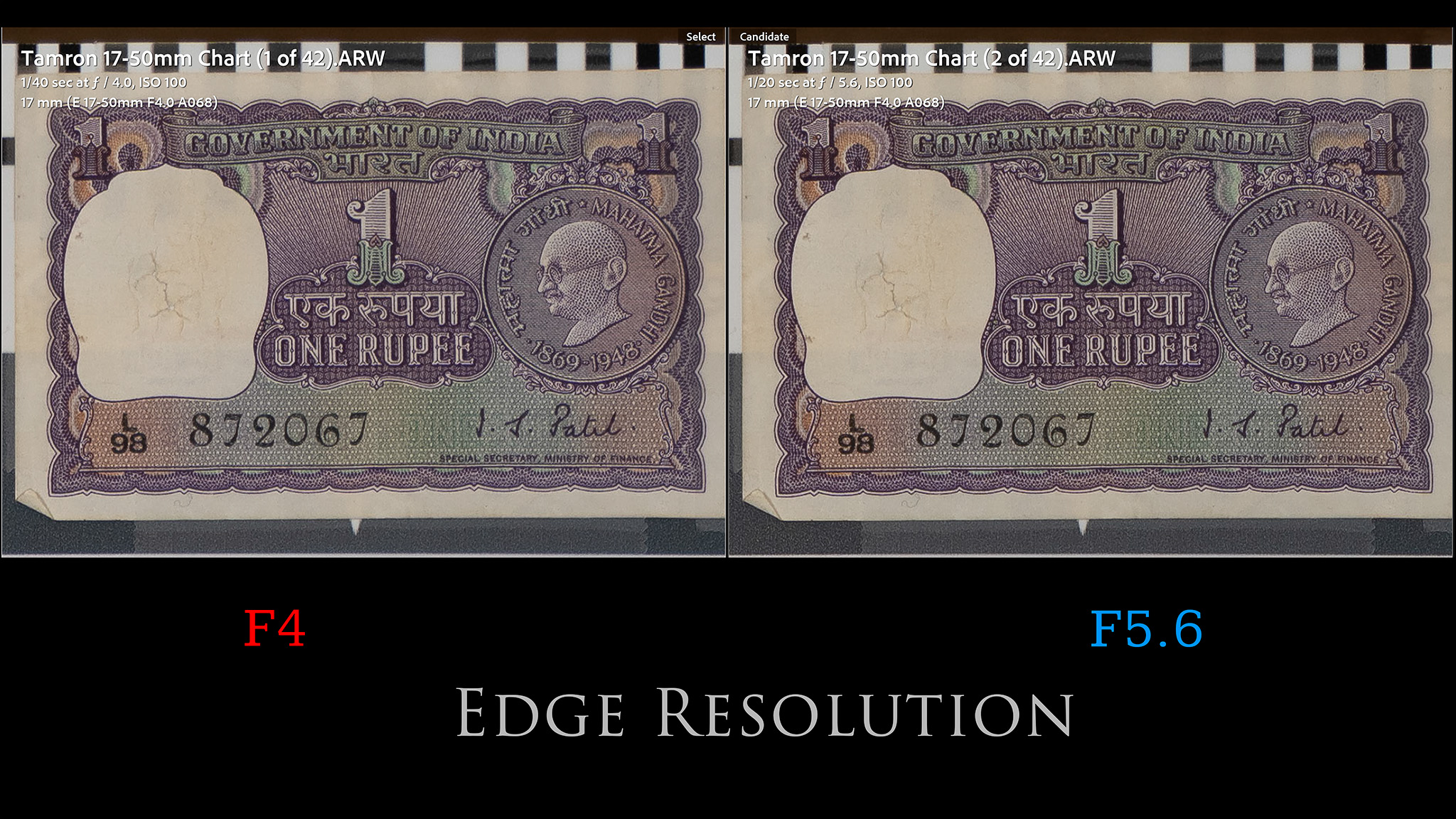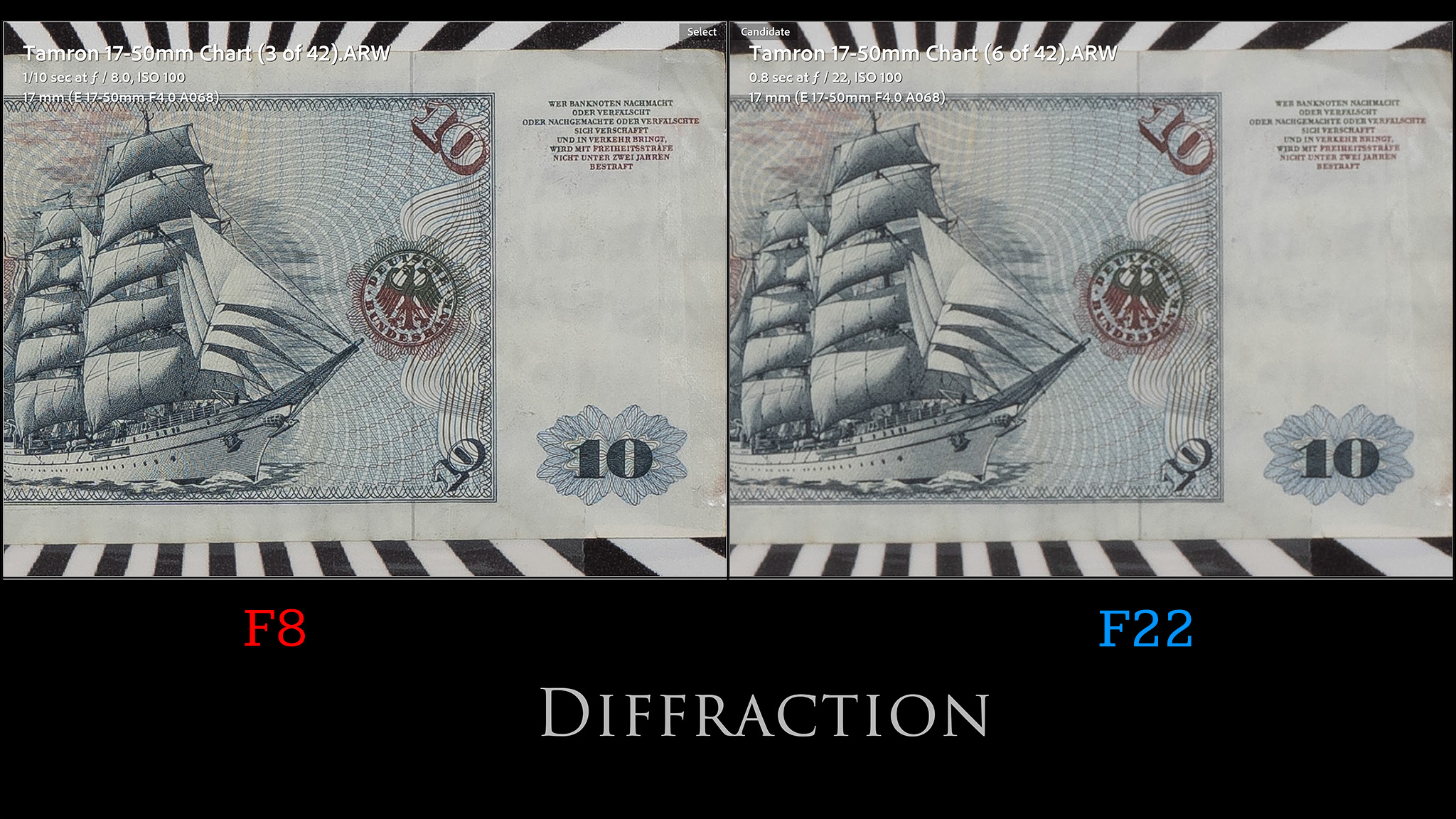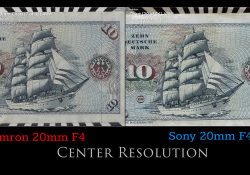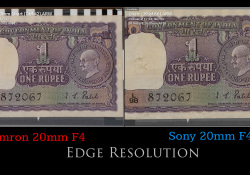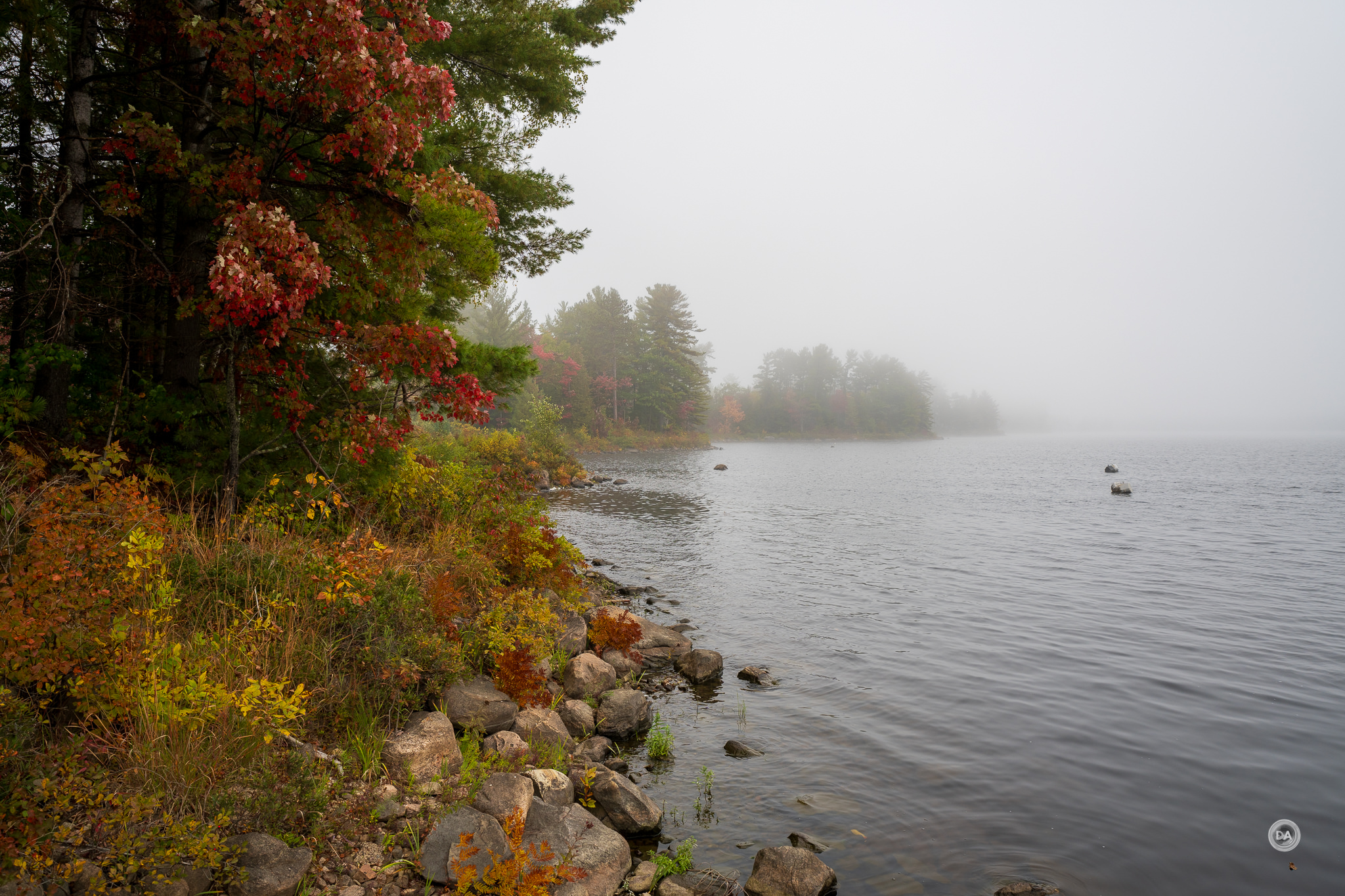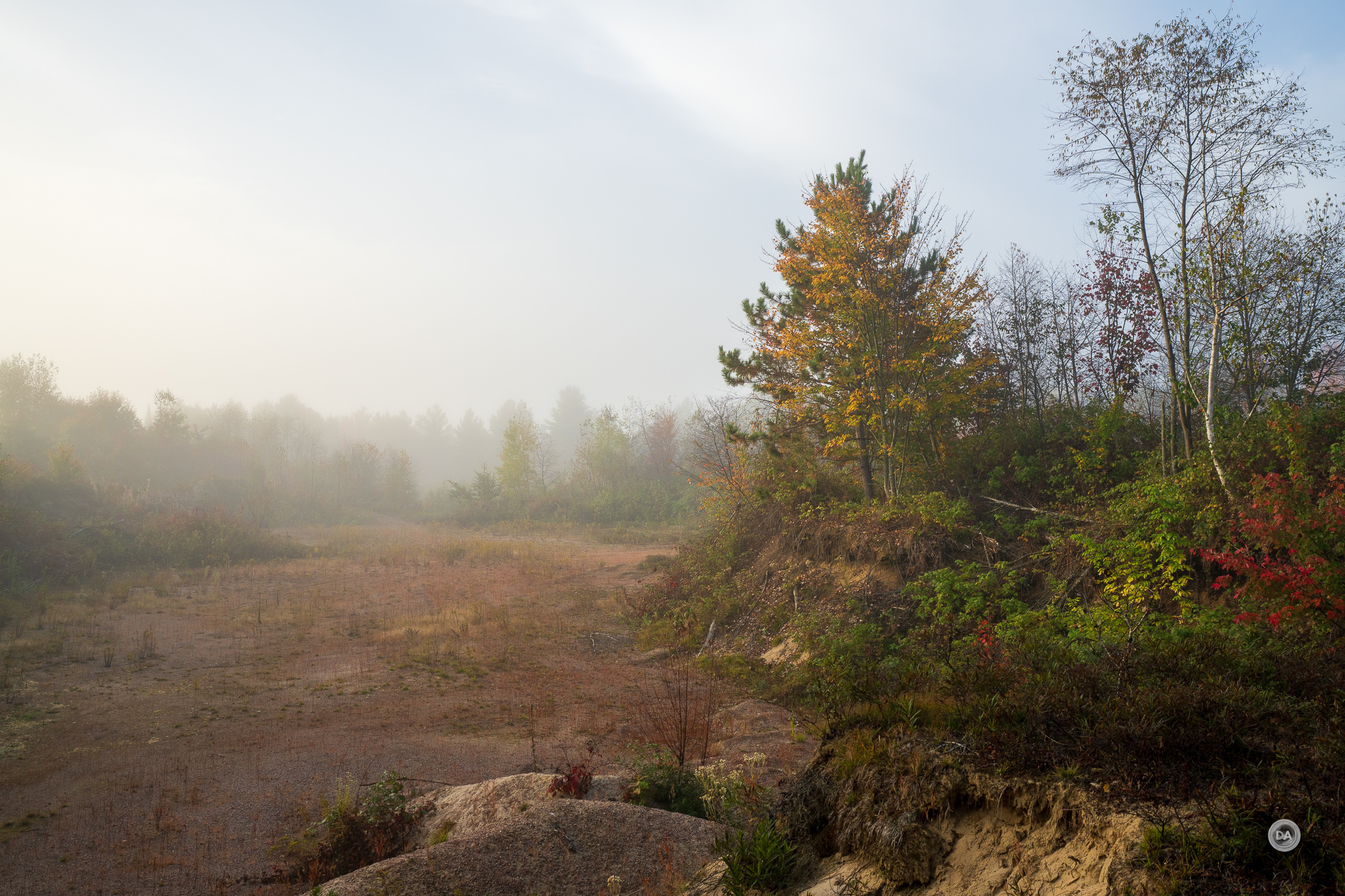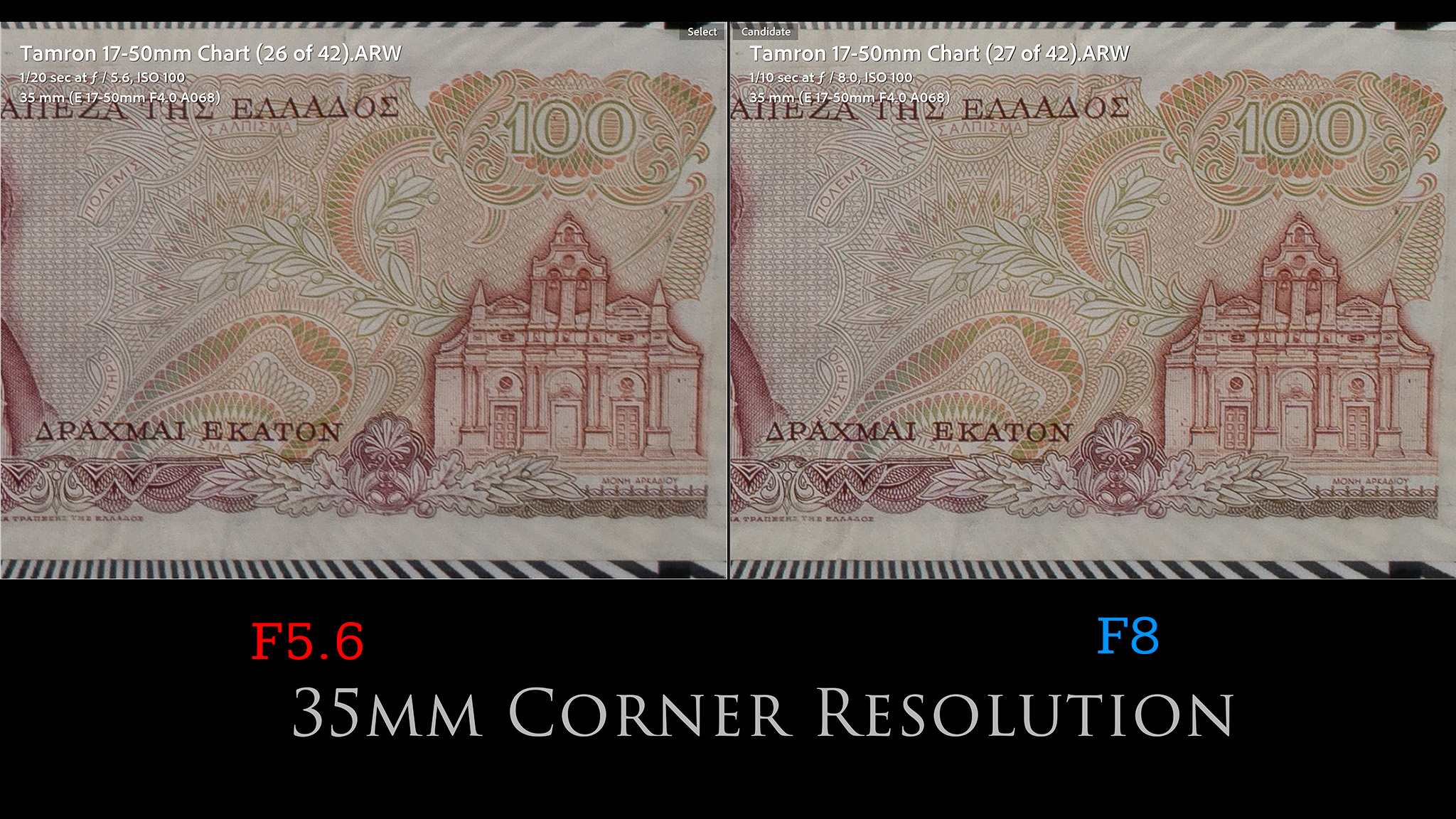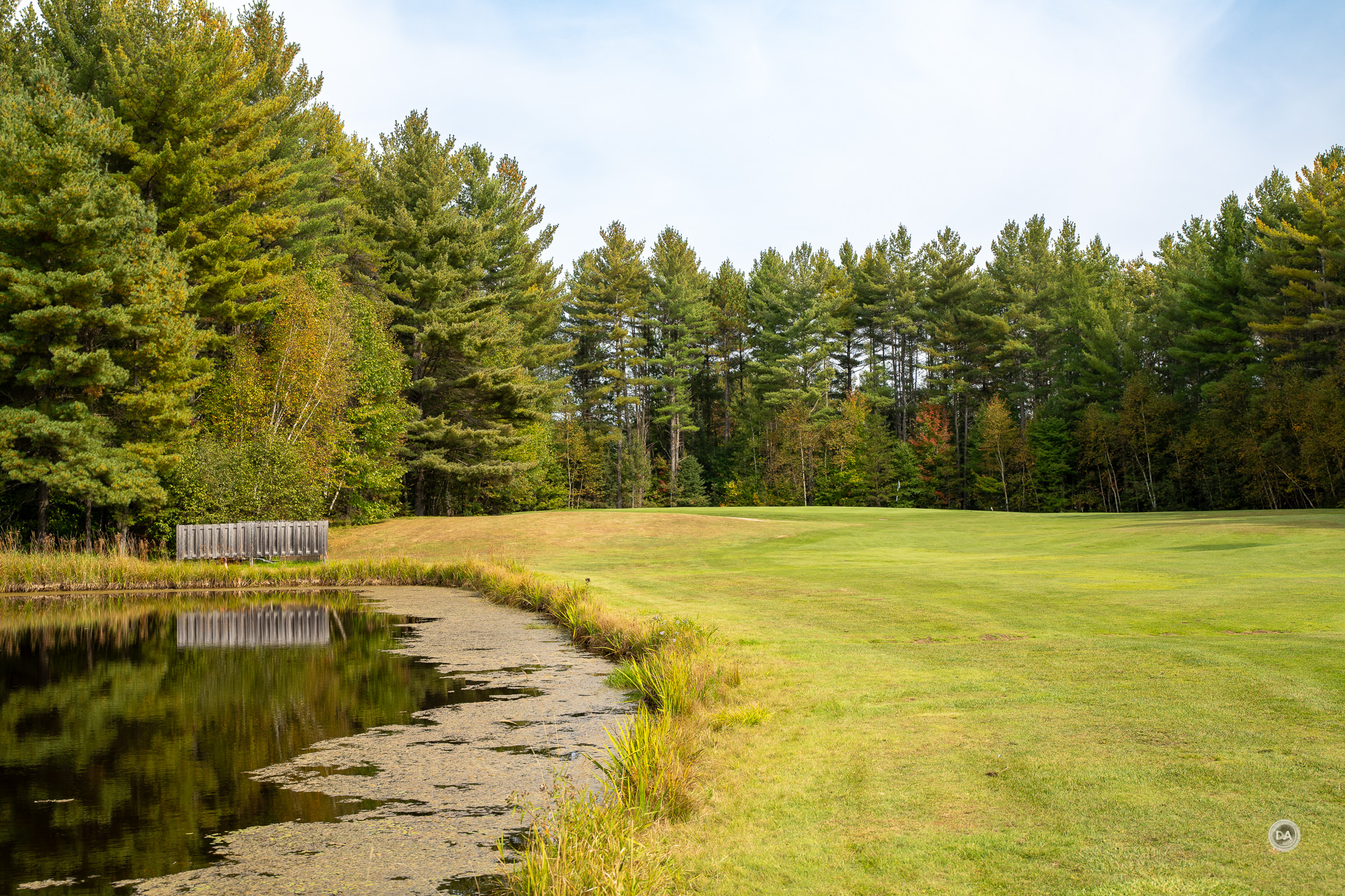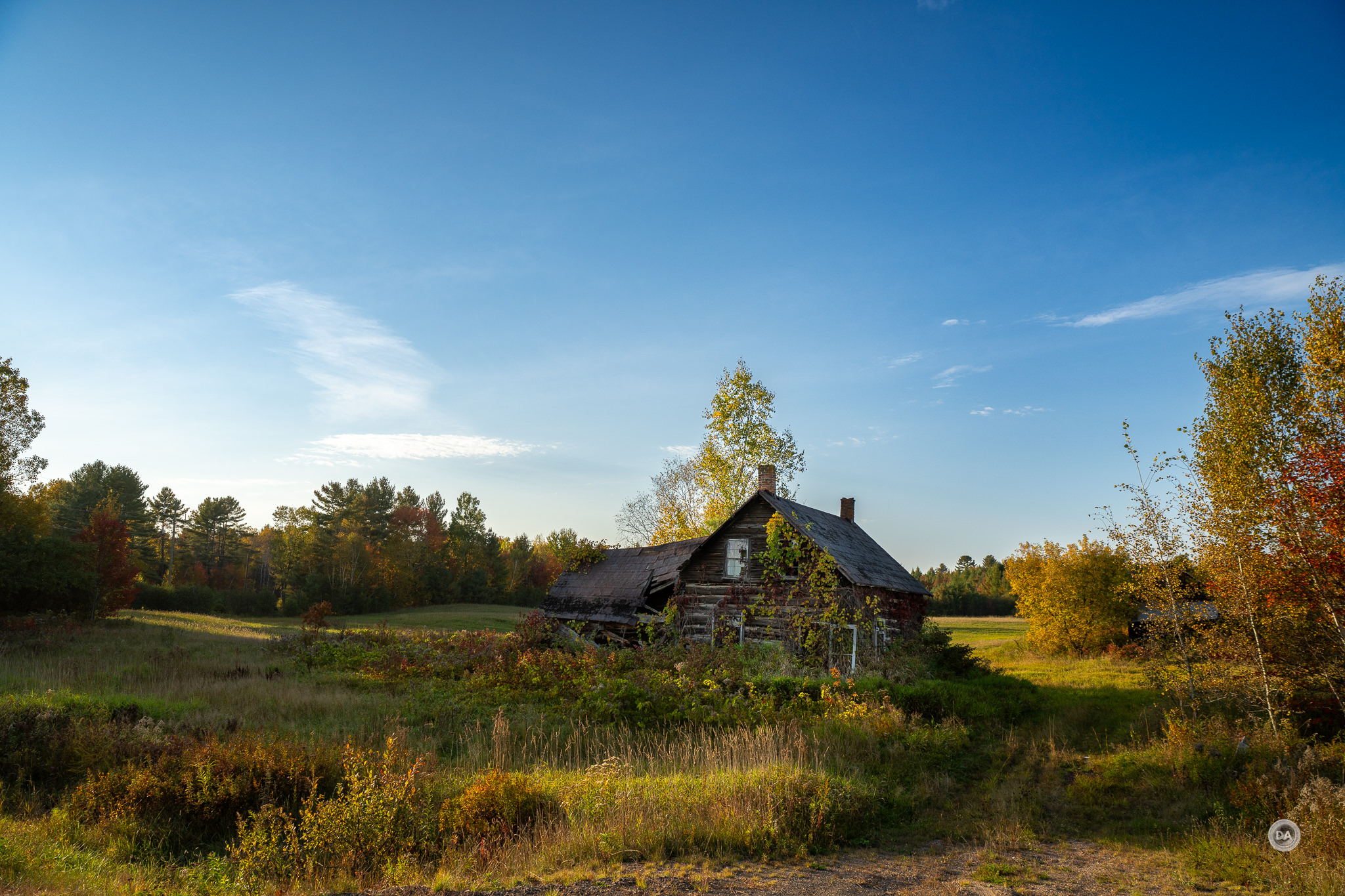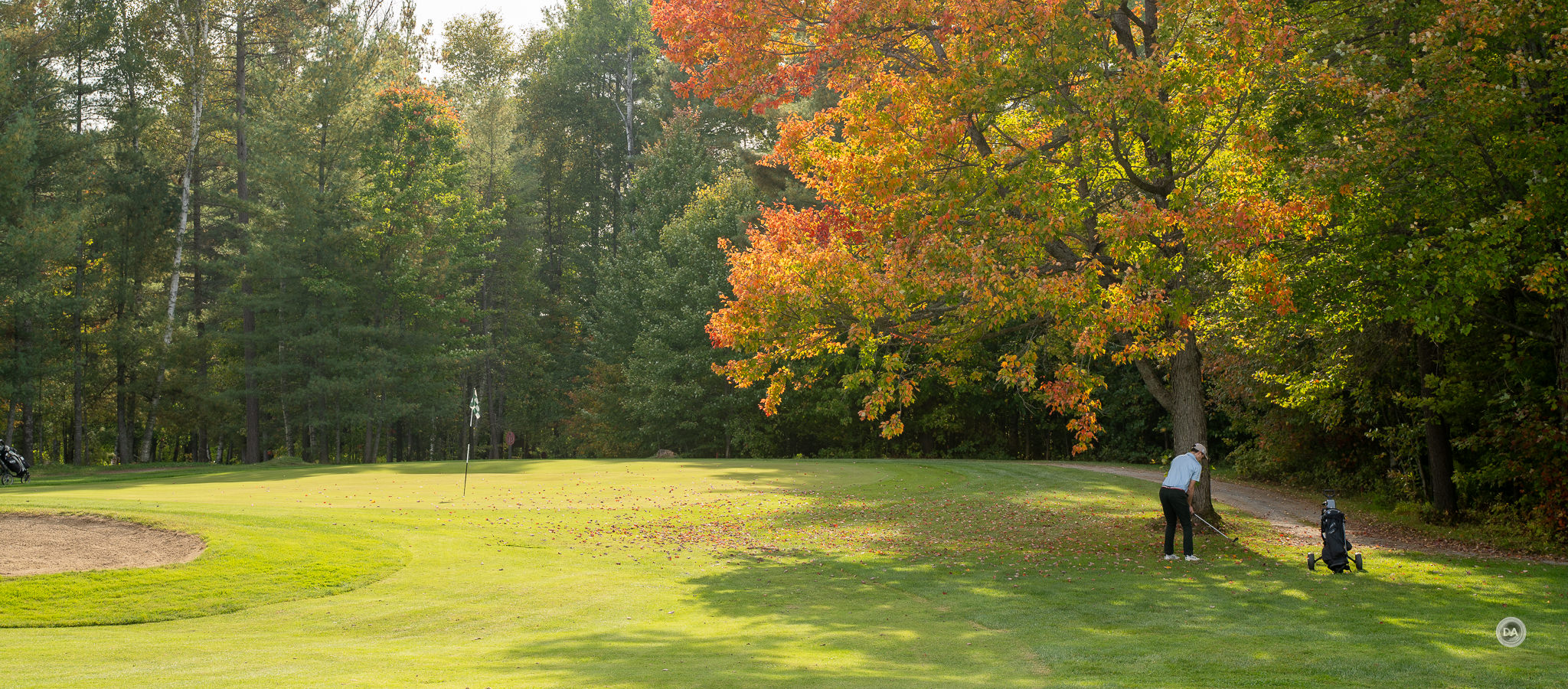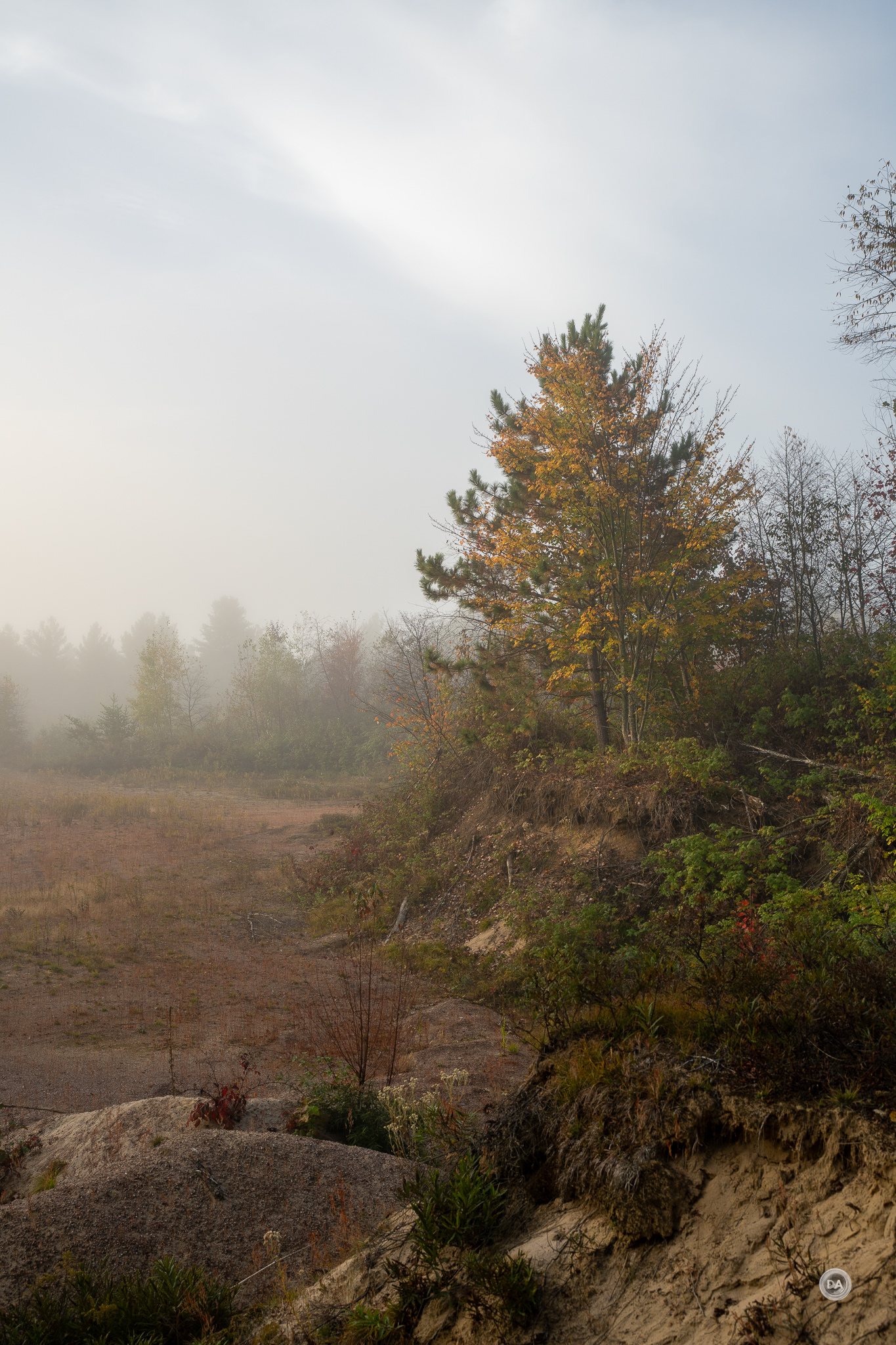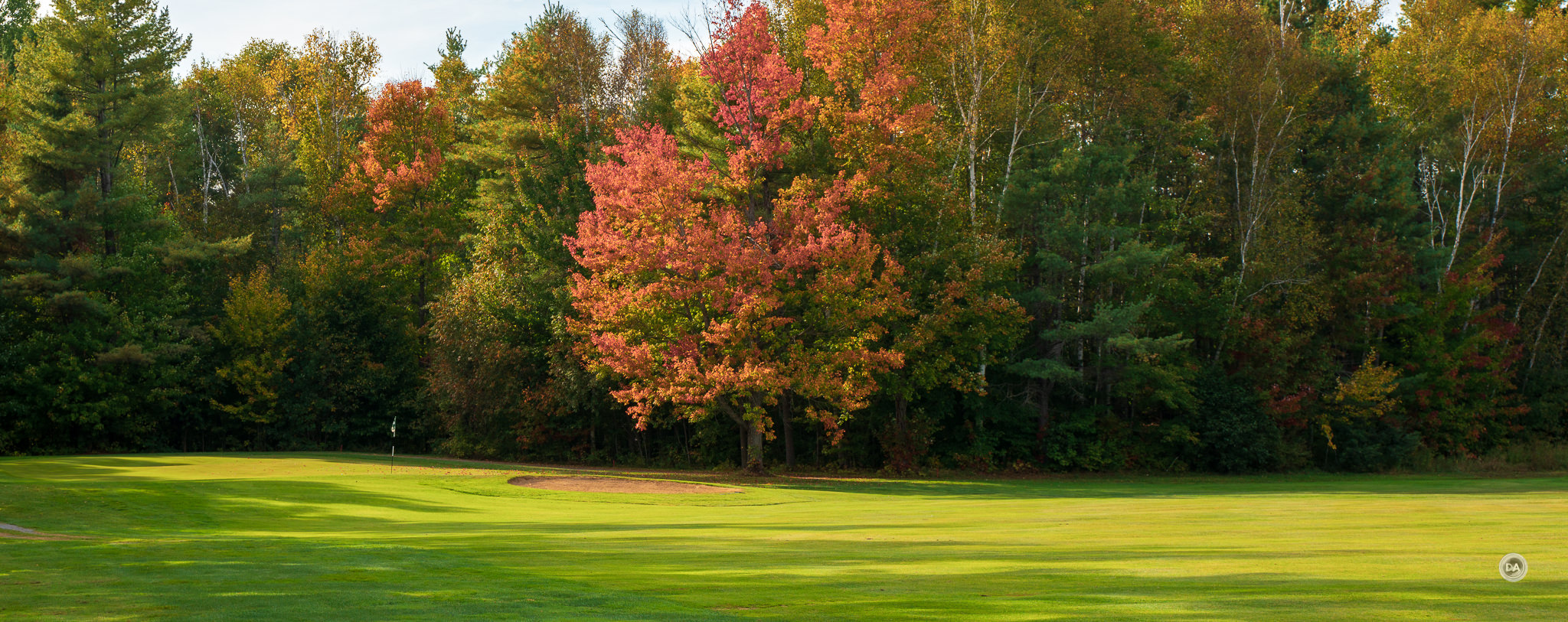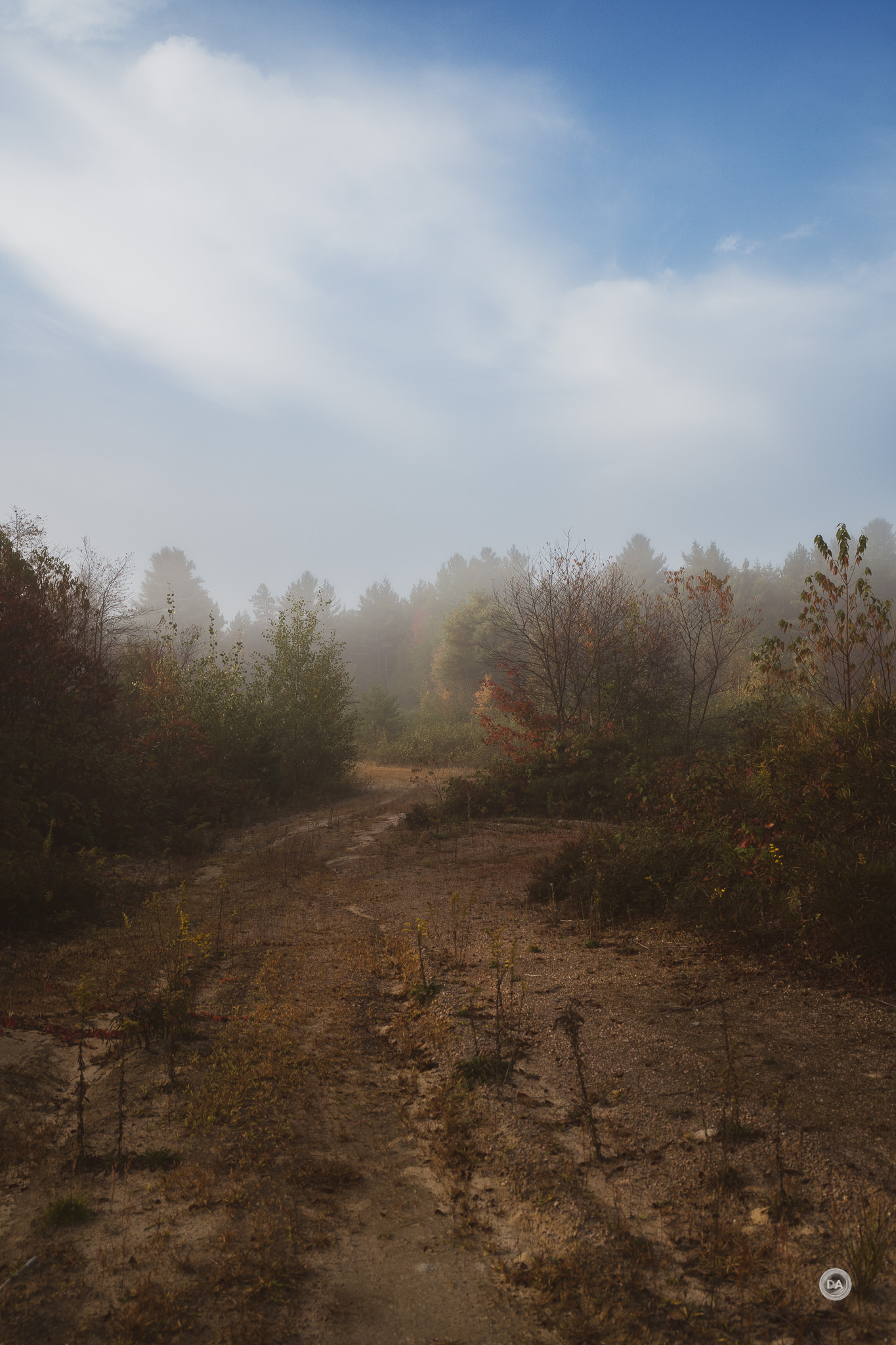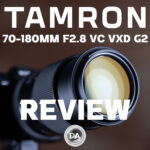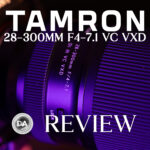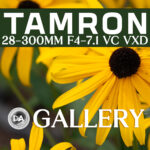Just a few months ago I reviewed the Sony FE 20-70mm F4 G lens, an intriguing lens that went wide enough at 20mm that many people could use it as their wide angle lens while still getting a “normal zoom” that reached as far as 70mm. I found it a great lens for travel, and I agreed with the argument from Sony that with modern, high resolution cameras it is relatively easy to crop in for more reach, but that doesn’t solve the problem of going wider. Tamron seems to have mirrored that argument, but taken it a bit further. Their newest lens is the interesting Tamron 17-50mm F4 Di III VXD, a lens that essentially works in reverse of the Sony design. Sony essentially take a standard zoom and made it wider, while Tamron has a taken a wide angle zoom and stretched it to reach 50mm. What’s more, their lens is an internally zooming lens that makes for a really intriguing gimbal lens due to the balance point staying constant. They have also aggressively priced the 17-40mm F4 at just $699 USD, which helps alleviate the biggest negative feedback I heard about the $1100 USD Sony lens; it was just too expensive. But is the Tamron a worthwhile option? We’ll explore that in the video review below or in the rest of this article.
Follow Me @ YouTube | Patreon | Instagram | Facebook | DA Merchandise | Flickr | 500px
Thanks to Tamron USA for sending me a review loaner of this lens. As always, this is a completely independent review. *The tests and most of the photos that I share as a part of my review cycle have been done with the Sony a7RV along with the Sony Alpha 1 that serve as my benchmark cameras for Sony lenses.
__________________________________________________________________________________________________
This focal range has a been a common one for APS-C zooms in the past, but this is the first time I’ve seen a lens quite like this one for full frame. The closest analog may be the Canon RF 14-35mm F4L IS, or, here on Sony, the Sony FE PZ 16-35mm F4 G. None of the focal lengths line up perfectly, obviously, so that leaves the Tamron as a fairly unique lens…particularly at this price point. Here’s a look at how the framing of a scene changes at each of the marked positions on the 17-50mm F4. (17, 20, 24, 28, 35, and 50mm):
What is interesting is that every single one of those focal lengths are sold as prime lenses, which shows just how many important focal lengths are covered by this zoom. Even more interesting is the fact that this lens covers all of those focal lengths very well, delivering extremely crisp results even on my high resolution Sony a7RV (61 MP).
The negative tradeoff here is that F4 is not a particularly bright aperture, so this isn’t going to be a top low light choice or allow you to play with depth of field much. Neither did the Sony 20-70mm, however, but I still found it a great travel choice. The Tamron can go even wider, however, delivering an angle of view as wide as 103°41′ compared to just 94° for the Sony. That’s going to be very useful in tighter spaces. Here’s the difference between 17 and 20mm:
The Tamron 17-50mm F4 VXD has a lot going for it – a nice build, good autofocus, good optics, and an excellent price. Is that going to be enough to steal away some of the Sony 20-70mm F4 G’s sales? We’ll explore that notion more thoroughly together.
Tamron 17-50mm F4 Build and Handling
The Tamron 17-50mm falls right in the middle of Tamron’s G2 releases, and the 28-75mm and 70-180mm G2 models have received significantly improved builds. Though this is a first generation lens, it does get a lot of the same treatment as those lenses, and, as a result, feels little more upscale. The most significant aspect of the design is the fact that it is internally zooming, and that comes with a number of positives.
It means that we have a constant length, for one. The lens is 114.4mm (4.5″) in length, which isn’t small, but it is still small enough to fit into all my camera bags while attached to the camera. It is only 74.8mm in diameter (2.94″), giving the lens a rather long and slender profile.
Tamron has been able to retain the 67mm front filter size that is shared across the vast majority of their mirrorless lenses, meaning that filter sharing is extremely easy if you own multiple lenses.
The lens weight is moderately light at 460g (16.2oz). That makes it a little lighter than the Sony 20-70mm.
Despite the moderate weight, the lens feels very well made. It is designed with a moisture resistance construction, starting with a gasket at the lens mount, internal seals at the rings, switches, and ports, and then a fluorine coating on the front element that allows for both protection and easy cleaning.
There is no dedicated aperture ring here (not really a feature that Tamron has embraced as of yet), but the aperture iris itself has 9 blades and retains a circular shape down to F8.
There are a couple of features on the barrel. One of those is a focus hold/custom button that can be programmed to various functions either from within the camera or through Tamron’s free Lens Utility software.
That software can be accessed via a weather sealed USB-C port that is one the side of the lens near the lens mount. This is a great feature as it not only gives a very quick way to do firmware updates, but it also gives you more customization control of the lens. You can program the custom button to switch the function of the focus ring between manual focus and acting as an aperture ring, for example, which helps to replace that missing aperture ring.
Some of those other programmable functions include a lot of customization of the manual focus ring. You can choose the direction of the ring, choose whether or not the action will be linear or non-linear, and even four different choices of how long the focus throw (ring rotation) will be. The quality of the manual focus is pretty good, with good weight on the ring and the ability to make focus essentially as fast or slow as you like by setting the focus rotation distance.
As an internally zooming lens, the zoom action is smooth and fast. Many people prefer an internally zooming lens as there is less chance of pulling in dust since no section of the lens barrel extends. This is also really valuable if you plan to use the 17-50mm F4 on a gimbal, as the balance is the same at 50mm as it is at 17mm.
Tamron has included a relatively shallow petal-shaped lens hood. It’s plastic and feels fine…but it’s nothing special. I prefer the way that Sigma does their hoods. They add on similar textures to the lens barrel so that the hood looks more integrated with the lens design.
Like most of Tamron’s recent zooms, there are separate minimum focus distances for the wide and telephoto ends. On the wide end you can focus as closely as just 19cm, though that leaves you very little working room as that leaves just 5.7cm (2.3″) beyond the front of the lens. You’ll almost certainly want to remove the lens hood to avoid shading the lens. You can achieve a nearly 0.22x, though with a lot of field curvature. Much better is the telephoto end, where you can focus as closely as 30cm (11.8″) and achieve a higher 0.26x magnification that also has a flatter plane of focus. Here’s what that looks like:
That’s quite useful, obviously, and allows you to get nice and close to subjects and blur out backgrounds despite the fairly narrow maximum aperture. Up close performance is fairly good though I did feel that contrast was reduced in some situations, like with this lock:
Getting up close to these leaves looks pretty great, however.
This is actually a fairly strong feature set for a $700 zoom lens. The build is nice and modern looking, and while the lens is largely engineered plastics, they feel quality in the hand. The rings move well, we’ve got the custom button, the USB-C button, an internally zooming design, and thorough weather sealing. If this lens had a Sony badge on it, it would almost certainly sell for $1000+. That makes the 17-50mm F4 feel like a good value.
Tamron 17-50mm F4 VXD Autofocus
The 17-50mm F4 has received Tamron’s best autofocus motor, called VXD, which stands for Voice-coil eXtreme-torque Drive. This is a high powered linear motor that makes autofocus quick, quiet, and accurate. There’s plenty here for both photography and video work. I could even catch Nala on the move with accurate focus.
While F4 is obviously not a particularly wide aperture, you can still get some subject isolation at 50mm, F4, and this shot shows how that focus grabbed on a narrow depth of field subject. I also had similar success in the same scene while shooting video.
I did a focus speed tests both indoors and outdoors and was generally impressed with focus speed and the confidence of focus acquisitions. Focus changes are near instantaneous, and I don’t think you’d see any real world difference between the Tamron 17-50mm F4 and the Sony 20-70mm F4 G. I saw good focus up close as well, like of this wide angle shot of a creeping vine turning a rich autumn red.
I shot a lot of video with this lens, as I think this is a very intriguing option for a lot of different video applications. Eye tracking was perfect for applications like vlogging even as I spun around with a quickly changing background. Here’s a screenshot from that video:
I had good eye tracking, whether it be human, animal, or insect:
My autofocus focus pulls test went very well, with quick, smooth pulls from one subject to another. There is next to no focus breathing with the lens, so there is little to draw attention to the focus transitions other than a different subject being in focus.
Likewise my “hand test” where I block the view of my face with my hand and then move the hand to allow focus to pop back to the eye went well. Transitions were smooth and confident.
That translates well to focus transitions in real world video as well. I could move from one subject to another with smooth focus transitions that make for nice video. I noticed good movement of focus as I used the lens on a gimbal as well and walked with the camera low to the ground.
I did a similar sequence where I walked in reverse as Nala followed me. The whole video sequence stays perfectly locked on her even though both of us are moving quickly. There’s a freeze frame from the video clip captured above.
I did test to see if this was a parfocal lens, but unfortunately it is not. The focus at 17mm and 50mm is quite a bit different. The good news is that autofocus was fast enough to keep up while zooming in and out while recording video.
The bottom line is that the Tamron 17-50mm F4 does everything you would want for autofocus. It is fast, quiet, and precise. This is definitely an area of strength for the lens.
Tamron 17-50mm F4 VXD Image Quality
The Tamron 17-50mm F4 has an optical design of 15 lens elements in 13 groups, including three LD (Low Dispersion), a GM (Glass Molded Aspherical), and two hybrid aspherical lens elements. We don’t have a high price tag here, but we do have a very high end optical performance. You can see from the MTF charts that the center of the frame is deadly sharp, and at 17mm that holds until the edge of the frame. 50mm isn’t much behind, though the corners are a bit softer. All in all, this is a very impressive MTF chart:
There’s no question that the lens delivers high sharpness and contrast in real world results across the zoom range.
We’ll work through the chart results by first looking at distortion and vignette. Here’s a look at the before and after of manual corrections to both at 17mm, then at 28mm, and finally at 50mm.
The drama is at 17mm, where we can tell that Tamron’s engineers had to really push to get this wide. The barrel distortion is both pronounced and complex, requiring at +44 to correct and leaving a fairly obvious mustache pattern behind. Likewise the vignette was also very heavy, requiring nearly maxing out the sliders (+94 – nearly four stops) to properly correct it. The Sony 20-70mm F4 was definitely better for having less vignette (only about 1 stop vs nearly 4 stops for the Tamron), but distortion was actually worse still. It required a +50 to correct and had a similarly complex mustache pattern behind it.
The correction profile does a pretty good job of cleaning up the distortion, though I found that more vignette correction was warranted.
Things are much cleaner in the rest of the zoom range. I only needed a +4 to correct for distortion at 28mm, and vignette was only a +35 to correct (right over 1 stop). At 50mm there was no distortion to correct and vignette was down to a +25, or about one stop, to correct.
I didn’t notice real world results being quite as extreme. Here’s an uncorrected result of a houseboat being towed out of the water, and it doesn’t look too bad.
I did see some longitudinal chromatic aberrations after the plane of focus in the form of a bit of green fringing.
I didn’t see much issue in real world use, however.
Lateral Chromatic Aberrations usually show up along the edges of the frame as fringing on either side of high contrast areas, but that doesn’t seem to be an issue here. You can see a nice, neutral transition from black to white on the corners of my test chart.
That’s good news, as you are far more likely to see lateral CA on a wide angle zoom in real world images than you are to see longitudinal CA.
So how about resolution and contrast? All chart tests done with a Sony a7RV (61MP) using a tripod and a two second timer. Here’s a look at my test chart:
And here are the crops (at roughly 170% magnification) from the center, mid-frame, and extreme corner at F4:
We see that sharpness is extremely good all across the frame. Even the corners look quite good.
That means that real world landscape images at 17mm will look very nice all across the frame.
The punch in the middle 2/3rds of the frame is particularly good.
There is relatively little improvement in the middle of the frame stopping down to F5.6 or F8, but I did see improvement ton contrast in the midframe and corners. You can see that the image on the right has a little more pop (F5.6):
I prefer F8 to F5.6 as the ultimate landscape aperture, as that is where sharpness and contrast achieve peak consistency across the frame. After F8 diffraction will start to soften the image until at F22 the image looks quite soft.
There’s some give and take in moving to 20mm. The center looks possibly even better, and the image is brighter as you move towards the edge due to lower vignette. Sharpness in the corners isn’t quite as high, however.
This gives us an opportunity to compare with the Sony 20-70mm F4 G. The Sony is the easy winner in the center (it is AMAZINGLY sharp), but the Tamron wins in the outer portion of the frame, though not by as wide a margin.
I saw the same pattern when comparing at F5.6.
At 20mm the sharpness peaked across the frame at F8…just like at 17mm.
24mm is just slightly softer at some points in the frame and similar to 20mm at others. Real world results at 24mm look pretty nice here!
28mm is virtually identical to performance at 24mm. Here’s one at 29mm, F5.6:
35mm is a little softer in the center than 28mm, but sharper in the corners. None of the subsequent focal lengths have matched the high bar of consistency set at 17mm.
Stopping down to F8 ups the sharpness to excellent levels across the frame.
As before, real world results look pretty great. Here’s one at 36mm, F5.6:
50mm is a slight improvement over the middle of the zoom range, though not quite as excellent as 17mm. Real world results looked excellent whether I was shooting landscapes:
…or if I was shooting more narrow depth of field shots, like this:
This shot allows us to transition to a discussion of bokeh, which is good but not exceptional. You can see that the transition zone between focus and defocus isn’t bad in the image above, but nothing looks super creamy, either. A maximum aperture of F4 and maximum focal length of 50mm means that depth of field is often not going to be particularly shallow.
That just means that more is going to be in focus than what you might like in some situations, which leads to busier backgrounds.
Here’s another bokeh shot for you to evaluate for yourself.
This is a lens that succeeds more at having a lot in focus rather than being a lens with a lot out of focus.
I found color rendition to be very positive. Images had rich levels of saturation.
Here’s another that looks great:
Even gloomy looked pretty good!
Flare resistance was also quite good. The 17-50mm F4 sports Tamron’s second generation BBAR coatings (G2), and they help deliver an impressive resistance to ghosting or veiling. Even when panning across the sun at various apertures, I got next to no negative effects.
There’s a lot more good than bad in the optical performance. This is a lens sufficient to give you good results for both photo and video in most situations. It isn’t my top choice for interior work/real estate due to the higher distortion on the wide end. You can see many more beautiful images by visiting the image gallery here.
Conclusion
The Tamron 17-50mm F4 VXD is an intriguing lens if your priority is versatility of focal range in your wide angle zoom. Tamron already had a very good 17-28mm F2.8 RXD zoom lens for Sony (for $100 more), but obviously that zoom range is much more limited than this new zoom. The 17-50mm F4 is a more interesting lens for video work for a number of reasons. The internal zoom, the ability to tweak the behavior of the manual focus ring, and the improved autofocus system all add up to an excellent lens for video work.
Like the Sony 20-70mm F4, I would also consider the Tamron a very good travel lens. It is wide enough to frame a lot of buildings or landscape scenes, but the 50mm end would allow you to do some portraits or get someone to take photos of you while traveling.
This is a lot of lens for the $699 USD price point. We’ve got excellent autofocus, a very nice build, and a strong optical performance. I also really like the internally zooming design. Images from the lens look very nice, and video footage does as well. This could be a great option for vloggers or wedding videographers as well. The amount of choice for Sony FE is staggering now, but there’s also hope that this lens will soon come to Nikon Z (and maybe even Canon RF) in the future, and this lens will be even more welcome on those platforms.
Pros:
- Internally zooming design
- Excellent focal range
- Good feature set
- Strong weather sealing
- Good customization options through free software
- USB-C port for firmware updates
- VXD focus motor delivers great autofocus results for photo and video
- Low focus breathing
- Very strong sharpness at 17mm
- Strong optics throughout zoom range
- Fringing well controlled
- Good color
- Good flare resistance
- Good price
Cons:
- Heavy vignette and distortion at 17mm
- Middle of zoom range not quite as sharp
- Not parfocal
__________________________________________________________________________________________________
GEAR USED:
Purchase the Tamron 17-50mm F4 VXD @ B&H Photo | Adorama | Amazon | Camera Canada | Amazon Canada | Amazon UK | Amazon Germany
Purchase the Sony a7RV @ B&H Photo | Adorama | Amazon | Camera Canada | Sony Canada | Amazon Canada | Amazon UK | Amazon Germany
Purchase the Sony a7IV @ B&H Photo | Adorama | Amazon | Camera Canada | Sony Canada | Amazon Canada | Amazon UK | Amazon Germany
Purchase the Sony Alpha 1 @ Camera Canada | B&H Photo | Adorama | Amazon | Sony Canada | Amazon Canada | Amazon UK | Amazon Germany | Ebay
Purchase a Sony a9M2 @ B&H Photo | Amazon | Camera Canada | Amazon Canada | Amazon UK | Amazon Germany | Ebay
Want to support this channel? Use these affiliate links to shop at: B&H Photo | Amazon | Adorama | Camera Canada | Amazon Canada | Amazon UK | Ebay | Make a donation via Paypal
Buy DA Merchandise https://bit.ly/TWIMerch

Keywords: Tamron, 17-50mm, F4, Di III, VXD, Tamron 17-50mm F4 Review, Tamron 17-50 Review, 17-50, Full Frame, Review, Sony Alpha 1, Sony a7RV, Review, Hands On, Dustin Abbott, Real World, Comparison, Sharpness, Bokeh, Flare Resistance, Autofocus, Image Quality, Sample Images, Video, Portrait, Photography, let the light in, #letthelightin, DA, Weather Sealing

